Menu
You can manage your membership and billing method by clicking here
Terms of Service
Privacy Policy
Copyright © 2025 Office of Immigration Australia, a private company registered in Australia. All Rights Reserved.

Checking membership status...
 EXCLUSIVE MEMBERS ONLY ACCESS
EXCLUSIVE MEMBERS ONLY ACCESSTo access this month’s edition & Member’s only resources, enter your registered email address.



Exclusive Australian Immigration News, Updates & Opportunities
March 2025
This bulletin is for members only, and provides our members with month to month updates on Australian immigration policy changes and consequential opportunities. Opportunities are found via federal and state government policy shifts for the demand and supply for certain occupations.
This bulletin will keep you up to date so that you do not have to employ expensive immigration lawyers to provide you with monthly research.
March 2025 is here, and the global fight for international talent further escalates into 2025 as the Australian Government’s new migration strategies demonstrate that the government is thinking seriously about how it utilizes the migration program to build out the country’s capabilities!
In This Month’s Federal News: New data has revealed that more than a million migrants have moved to Australia over the past three years! With the population aging and the birth rate declining, immigration is not just beneficial to Australia; it’s essential! Australia is now heavily reliant upon high immigration to provide a tax base and support an aging population.
Also in this month’s federal news, we look at The Migration Amendment (Strengthening Employer Compliance) Act 2024, which introduced new laws to tackle migrant worker exploitation. These laws protect all migrant workers, regardless of their visa status. This includes people who have a visa with work rights, an expired visa, and those who are working in breach of their visa conditions.
In This Month’s State News: Skilled workers residing offshore remain eligible to be considered for State and Territory nominations! Please view the State Migration Section of this month’s bulletin for all State and Territory program updates and opportunities available!
In This Month’s Economic News: Australian households and businesses should benefit from lower interest rates and improved market conditions, in what a University of South Australia economist predicts will be a year of growth for the country!
In other economic news, we speak with an Aussie mortgage broker who has opened up about how she landed her six-figure salary without going to university!
Also in this month’s bulletin, we uncover the often-overlooked coastal town of Bermagui and discover its pristine beaches, local markets and range of outdoor activities!
In This Month’s Student News: We look at how an Australian university student has emerged as one of the key figures behind China’s revolutionary AI platform, DeepSeek!
Also in this month’s student news, new data from the Australian Department of Home Affairs shows that since mid-2024, monthly student visa grants have consistently reached or exceeded pre-pandemic records. This student visa surge demonstrates the resilience in international education despite 12 months of policy changes.
All this and much more in the March issue of The Australian Immigration Bulletin! Let’s take a deeper look at what has happened so far and what is planned for the remainder of March 2025 in Australian Immigration, so that you can start planning!
All members now have FREE access to an online IELTS English Platform and course to practice, study and improve their English and IELTS score. The IELTS exam is one of the key recommended exams you will need to take in order to Apply for Skilled Migration to Australia and the better your results, the higher points you will get when submitting an expression of interest. The advanced English and IELTS platform will allow all members to practice Mock IELTS Exams, learn cutting edge tips and gain a greater understanding of how to achieve a Band 9+.
All members also have access to “ImmiConnect” which is now available in the member’s area. ImmiConnect is the Office of Immigration Australia’s Employer Sponsored program which allows overseas workers to receive job interview invitations from Australian employers, when job opportunities come available.
The program aims to bring globally mobile, highly-skilled and specialised individuals to Australia who can fill critical areas of need.
ImmiConnect is exclusive to active Australian Immigration Bulletin Members only. You must be a current Australian Immigration Bulletin Member to be eligible to receive job interview invitations.
So if you are interested in receiving these invitations, please sign up for FREE by Clicking “ImmiConnect” and adding your name and email address.

*2 WINNERS DRAWN EVERY MONTH:
Current Round: January 2025 – May 2025 (10 Winners/Prizes in total)
There is always a winner, and the next one could be you!
The winners of the March 2025 Immigration Prize Giveaway were drawn at 10am AEST on 1st March 2025.
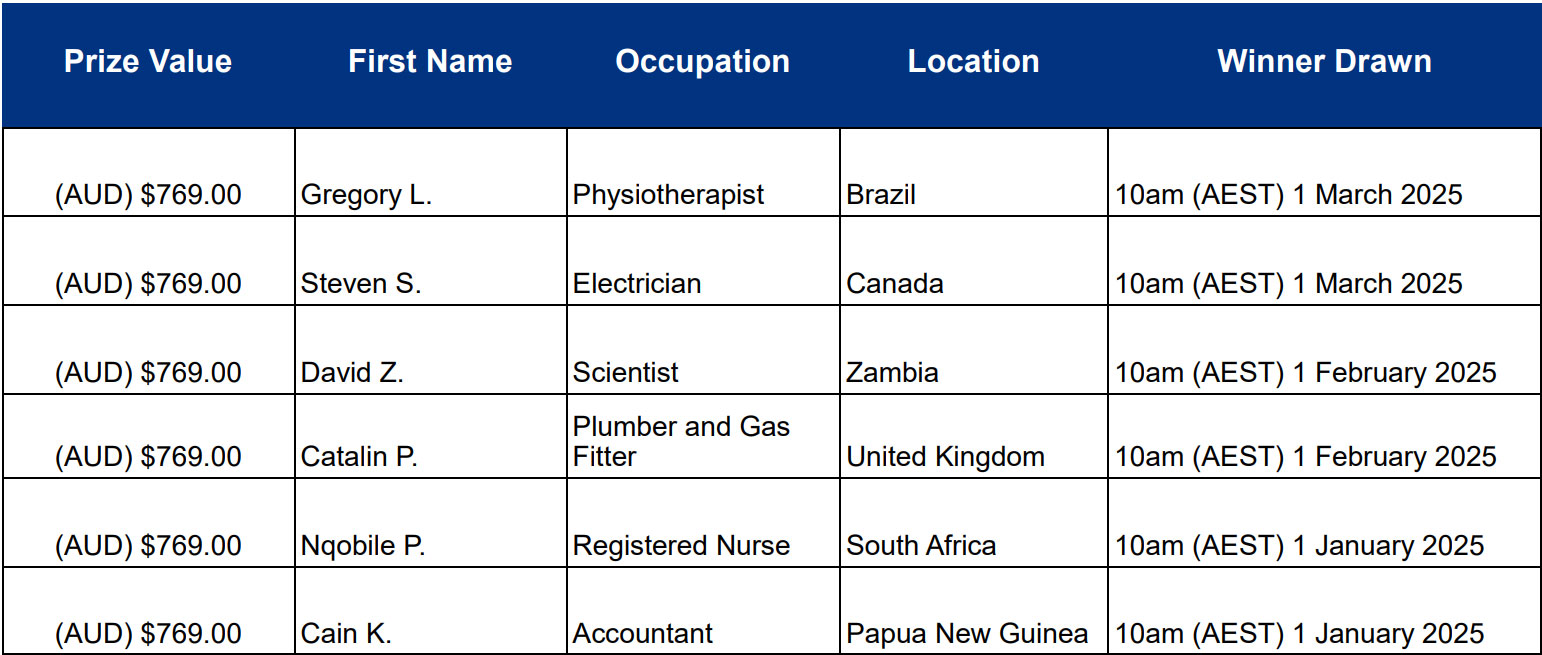
Congratulations to the March 2025 winners! You have been sent a confirmation email with details on how to claim your prize!
The next 2 lucky winners will be drawn at 10am AEST on 1st April 2025.
As of 6th July 2022, people entering Australia do NOT need to provide evidence of Covid-19 vaccination status. Additionally, people leaving Australia will NOT be asked to provide evidence of their vaccination status. Unvaccinated visa holders do NOT need a travel exemption to travel to Australia. It is however important to remember that airlines, vessel operators and other countries may have specific requirements that travellers need to comply with.
Please see the list of vaccines that are recognised by the Australian government for travel purposes here.
This Bulletin and its contents is for general information purposes only and should not be used as a substitute for consultation with professional advisors.
As legislation and travel requirements are constantly changing, we strongly recommend obtaining advice on your individual situation from a Registered Migration Agent.
Please click here to book a consultation with one of our Registered Australian Migration Agents, located in Australia.
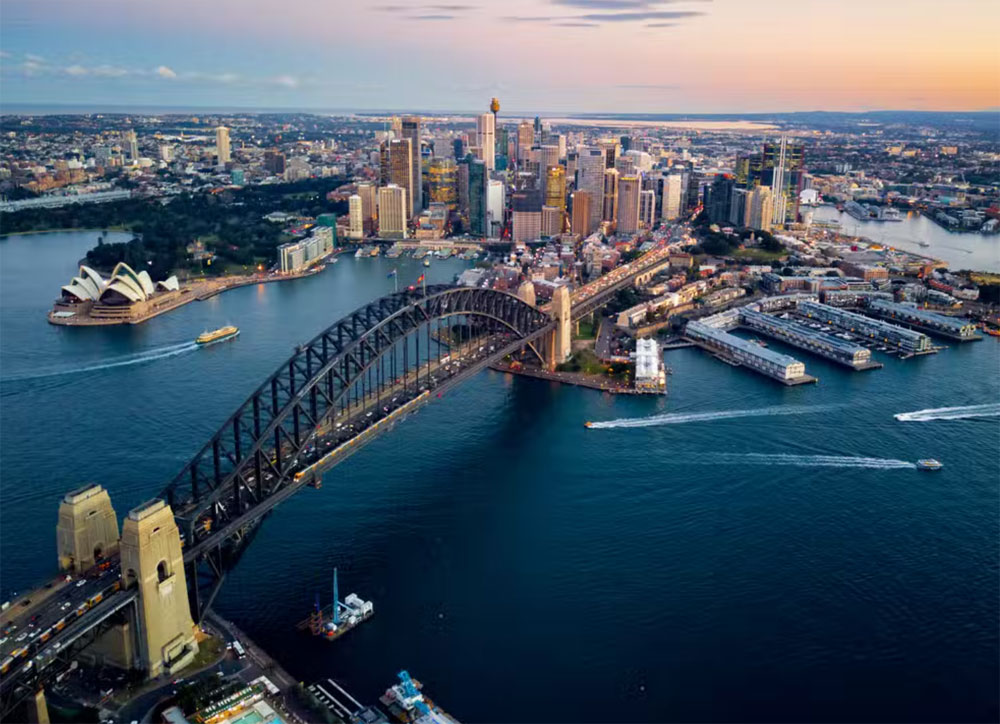
Sydney, New South Wales
The Results of the August 2021 census were made public on 12th July 2022, and revealed that Australia has become a majority migrant nation, as the census data shows for the first time that more than 50 per cent of residents were born overseas or have an immigrant parent. Last year’s census counted nearly 25.5 million people, including 1 million new residents.
Australia’s 2025 Migration Program has been carefully designed to boost the social and economic outcomes that meet Australia’s needs. In fact, the migration programme was first launched in 1945 following the aftermath of World War 2. Given this long history, it is worth understanding how it works. The Australian Immigration Bulletin exists to help explain this in more detail.
As we’ve entered the 3rd month of the year, join us for a look at the latest news and developments in the world of Australian Immigration!
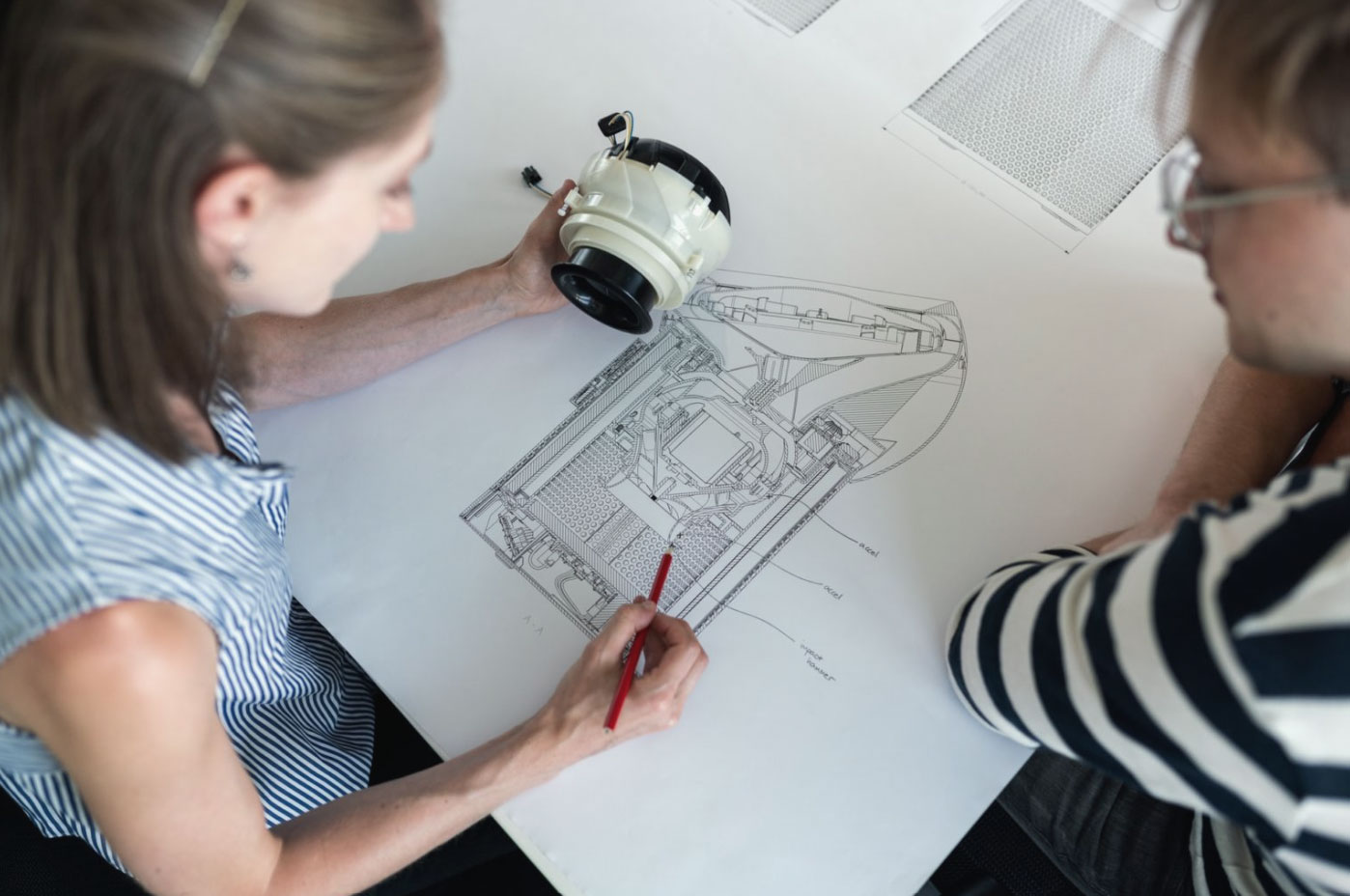
We spoke with Prisciliana, a skilled migrant and an engineer currently working for a private company.
Can you tell us a little about you?
I am a dedicated professional with a strong background in civil engineering, roads supervision and maintenance, and project control. She is also an Environmental technologist (Water and Sanitary Sewer Analysis). Highly responsible and well-practised in converting management demands into desired results through prioritizing and organizing tasks.
What was your first job?
I started at IHG as an Administrative Officer, helping the Procurement Engineer to implement a new maintenance system.
What did you like and dislike about this job?
I love to come back to work with challenges that make it possible to think and use engineering skills. However, I dislike being at the workshop and have to understand mechanical issues.
What was the biggest challenge, and how you deal with it?
My biggest challenge was when they give me a manager position, and I was afraid about my English. I was pretty sure that I could handle the new place, but I felt insecure about my accent. I had a long talk with my boss, and he was very willing and helped me a lot with my ‘English issue’.
How did you find out about it?
I was in a pub and started a conversation with one unknown. This guy knew many people who work with civil engineers and talked about me to his friends. And one of his friends sent me an email inviting me for a chat.
How did you apply?
I went to this informal meeting, and we talked a lot about roads surfacing.
How did you convince them you had the skills to do the job?
During this conversation, he noticed that I had a lot of experience. Although I always studied roads surfacing in Australia, this helps me know and understand what he was saying about his company.
What did you learn about yourself doing this job?
I learn that I am capable of doing anything that I want. I become more confident, and even with “not perfect” English, I can deal with my employees and solve my daily problems at the company.
What tip would you give job seekers from other backgrounds eager to get their first job in Australia?
Never give up! If English is a big issue for you, do your best and show how capable and proactive you are.
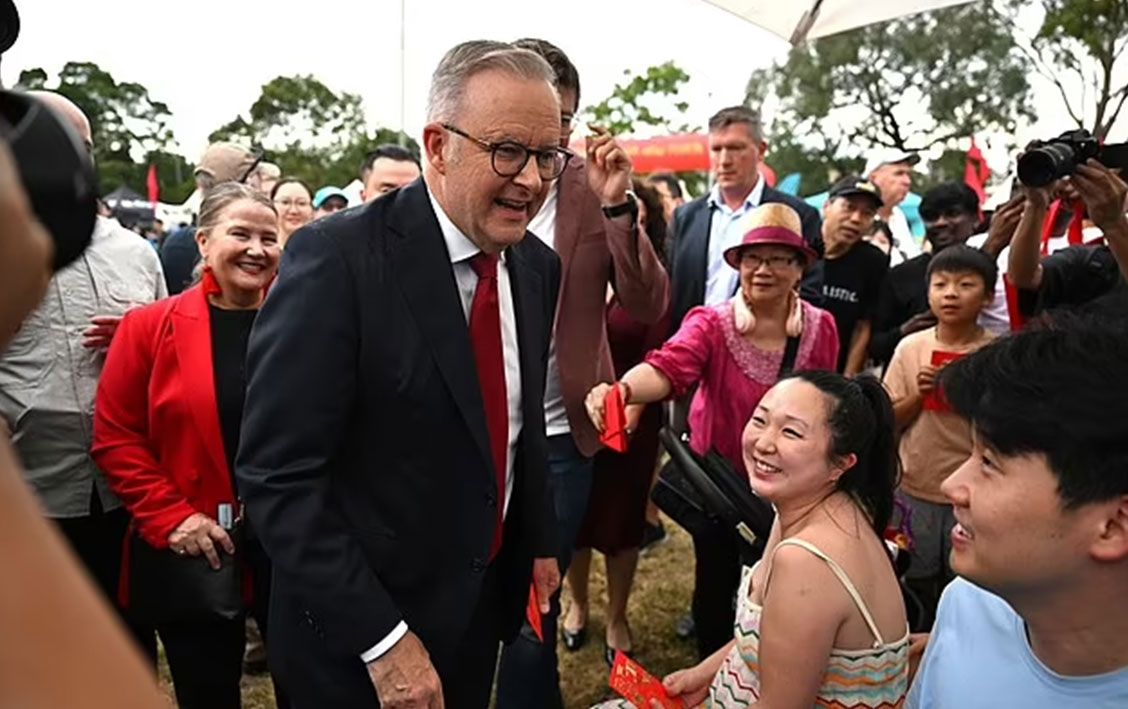
More than a million migrants have moved to Australia over the past 3 years. With the population aging and the birthrate declining, immigration is not just beneficial, it’s essential. Australia is now heavily reliant upon high immigration to provide a tax base and support an ageing population, experts say.
Australia’s fertility rate – or the number of children a woman gives birth to during her lifetime – has fallen to a record-low of 1.5.
The level in 2023 was well below the ‘replacement level’ of two and half the level of the early 1960s before the contraceptive pill was widely used.
From June 2022 to December 2024, 1,007,600 migrants moved to Australia on a permanent and long-term basis, with the influx of skilled migrants hitting record-high levels since the Labor Government was elected.
The Institute of Public Affairs think tank’s deputy executive director Daniel Wild said 1,000 migrants had arrived every day.
The 444,480 level for 2024 was quadruple the 100,000 per annum intake that had lasted until the late 1990s, before immigration levels tripled by the late 2000s.
Like other first-world nations, Australia has relied on high immigration to boost the available pool of labour and broaden the income tax base, to cope with the cost of providing more government services to an ageing population.
Australia’s fertility level slipped below the ‘two’ level for the first time in 1978 but it briefly returned to the replacement level in 2008, after John Howard’s Coalition government had introduced a lump-sum $3,000 baby bonus in 2004.
New parents now get a $667 upfront payment that’s not taxed, and $2,004 for their first child, paid over 13 weeks.
For subsequent children, it is $668.85 also spread over 13 weeks.
Women are also having children later in life compared with previous generations with the more new mothers aged 30 to 34, than those aged 25 to 29, since 2000.
The proportion of women having children in their late thirties is now comparable with the number being pregnant in their late twenties, with women now delaying motherhood until they had established a career.

Australia is currently experiencing a skills shortage and slower economic growth. We have seen more Australian citizens leave the country since the pandemic than ever before. The data doesn’t tell us about the motivations, but we can speculate.
The pandemic created an excuse to rethink priorities in life and now more people move overseas to see the world. The higher cost of living in Australia combined with the pandemic-induced acceptance of remote work might have convinced some Australians to work in a low-cost nation while collecting an Australian salary.
Migration numbers tend to get reported in net terms. We subtract people leaving Australia from the number of people arriving in Australia. We use migration to grow our population base and usually experience positive net migration. Therefore, we take in mostly young migrants.
Almost all new migrants into Australia are under 45.
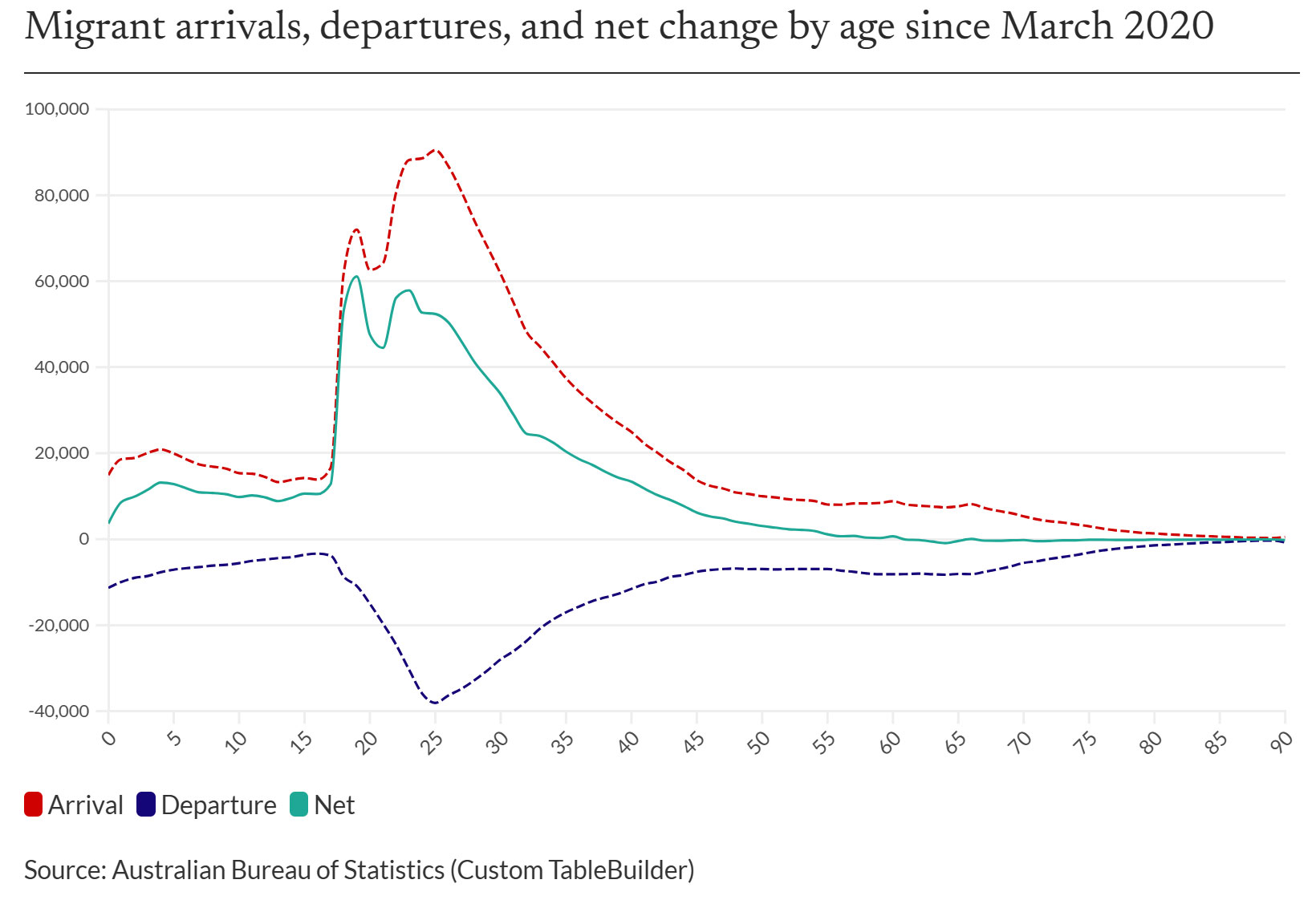
About 85 per cent of net new migrants are under 45.
Australia gear’s it’s migration system to take in relatively young people because we want them to be part of the workforce for a long time; pay for their own retirement by accruing enough savings in their super accounts; and of course, younger people tend to be able to assimilate to a new culture.
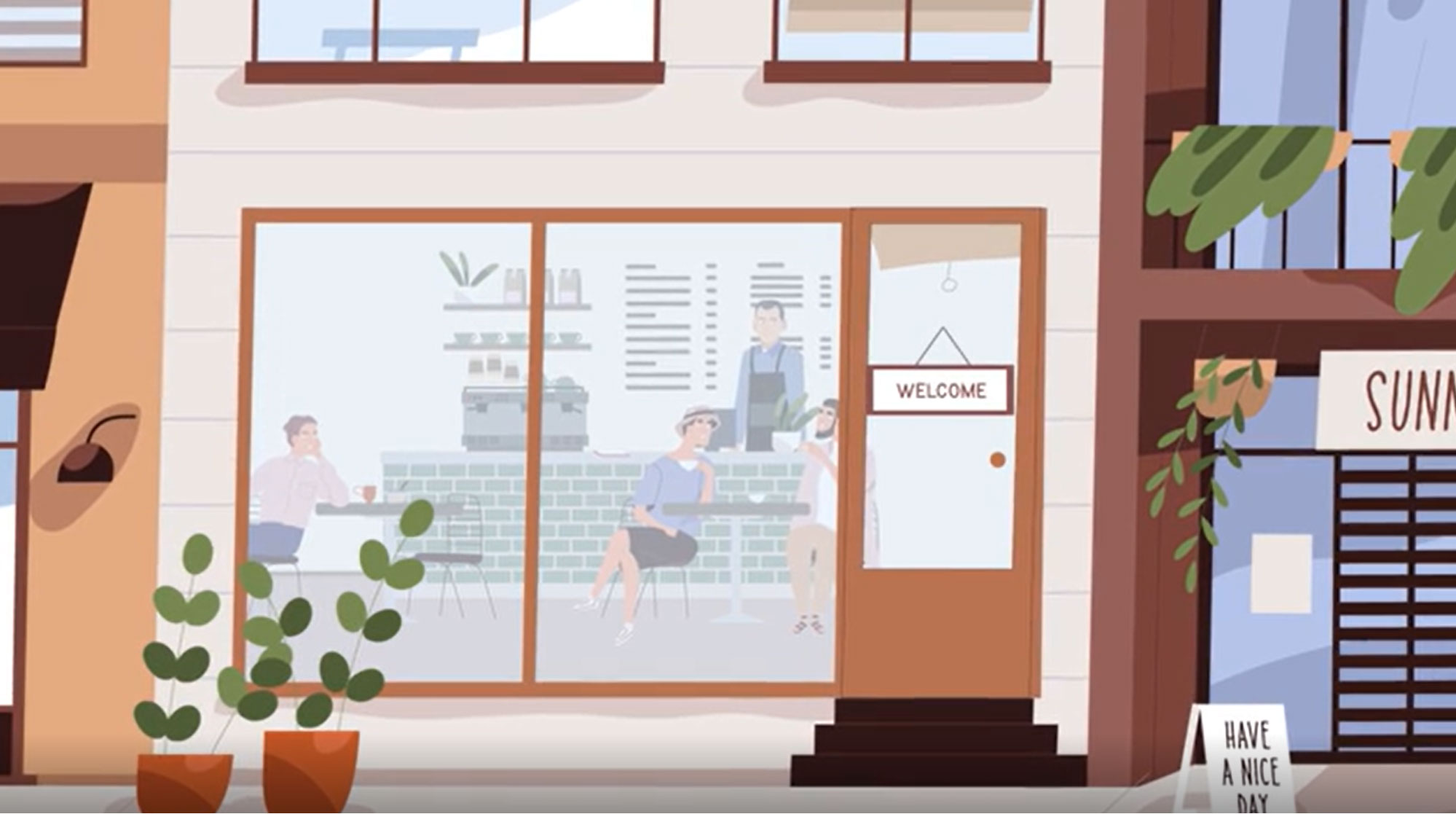
The Migration Amendment (Strengthening Employer Compliance) Act 2024 amended the Migration Act 1958 to introduce new laws to tackle migrant worker exploitation. The laws deter employers and others in the labour chain from using a person’s migration status to exploit them. They help create a level playing field for businesses doing the right thing.
The new laws aim to:
There are 3 new work-related offences that make it illegal for employers, including sponsors, and labour hire intermediaries to:
The laws cover a range of work-related situations where exploitation might happen.
These types of situations include, but are not limited to:
The laws protect all migrant workers, no matter their visa status. This includes people who have a visa with work rights, an expired visa and those who are working in breach of their visa conditions.
You can report workplace exploitation to either the:
You can report anonymously.
We have a look at the successive waves of migration that made Australia a more harmonious multicultural nation.
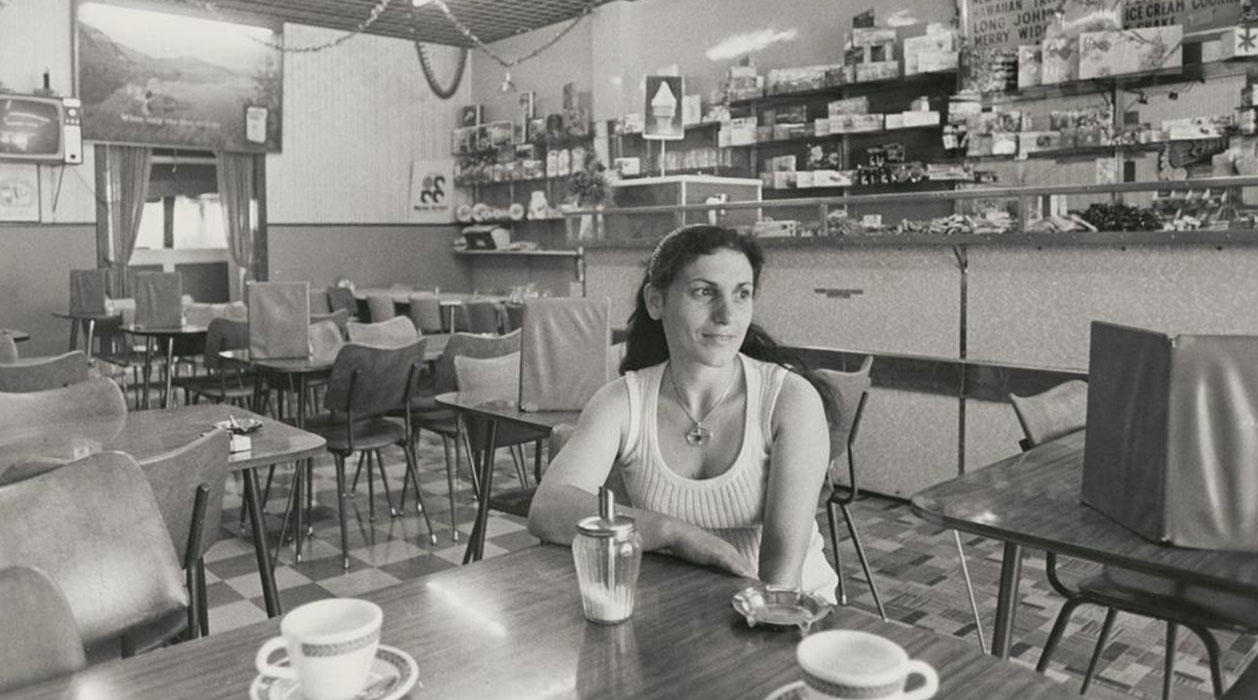
In the past decade or two but especially since Covid, when too much isolation and time alone with our screens led to a national spike in collective neurosis, Australia has been in a state of anxiety about its own history, identity and future. Suddenly everyone began repeating formulaic acknowledgments of country at every opportunity; gallery and museum websites forced visitors to pass through a veil of contrition to find the information they were looking for; we started referring to Indigenous people as “First Nations”, a peculiar misnomer apparently imported from Canada. Sentimentality and hypocrisy overwhelmed what we used to think of as dry and laconic Australian common sense.
A chapter I contributed to a book in the past couple of years was looked over by what is now called a sensitivity reader; then the final draft was reviewed by a “First Nations reader”. Fortunately the text came through relatively unscathed, but this was exactly the kind of censorship the Catholic Church once enforced: a text could be looked at by a theological expert and if it contained no heretical opinions it was given the “nihil obstat” stamp (literally, “nothing stands in the way”); further review by a higher clerical authority would give it the imprimatur (“let it be printed”).
One the few substantial matters raised by the sensitivity censor was that they preferred to use the word colonist rather than settler, to avoid the suggestion that the land was unsettled before the arrival of Europeans.
Throughout history, invaders often have been refugees themselves, fleeing from a superior enemy or from natural catastrophes. In Australia, in particular, the first settlers were deported convicts and their guards; in later generations many were economic migrants, leaving conditions of poverty and seeking a better life than they could have at home. And with the economic migrants we have also had periodic waves of political refugees.

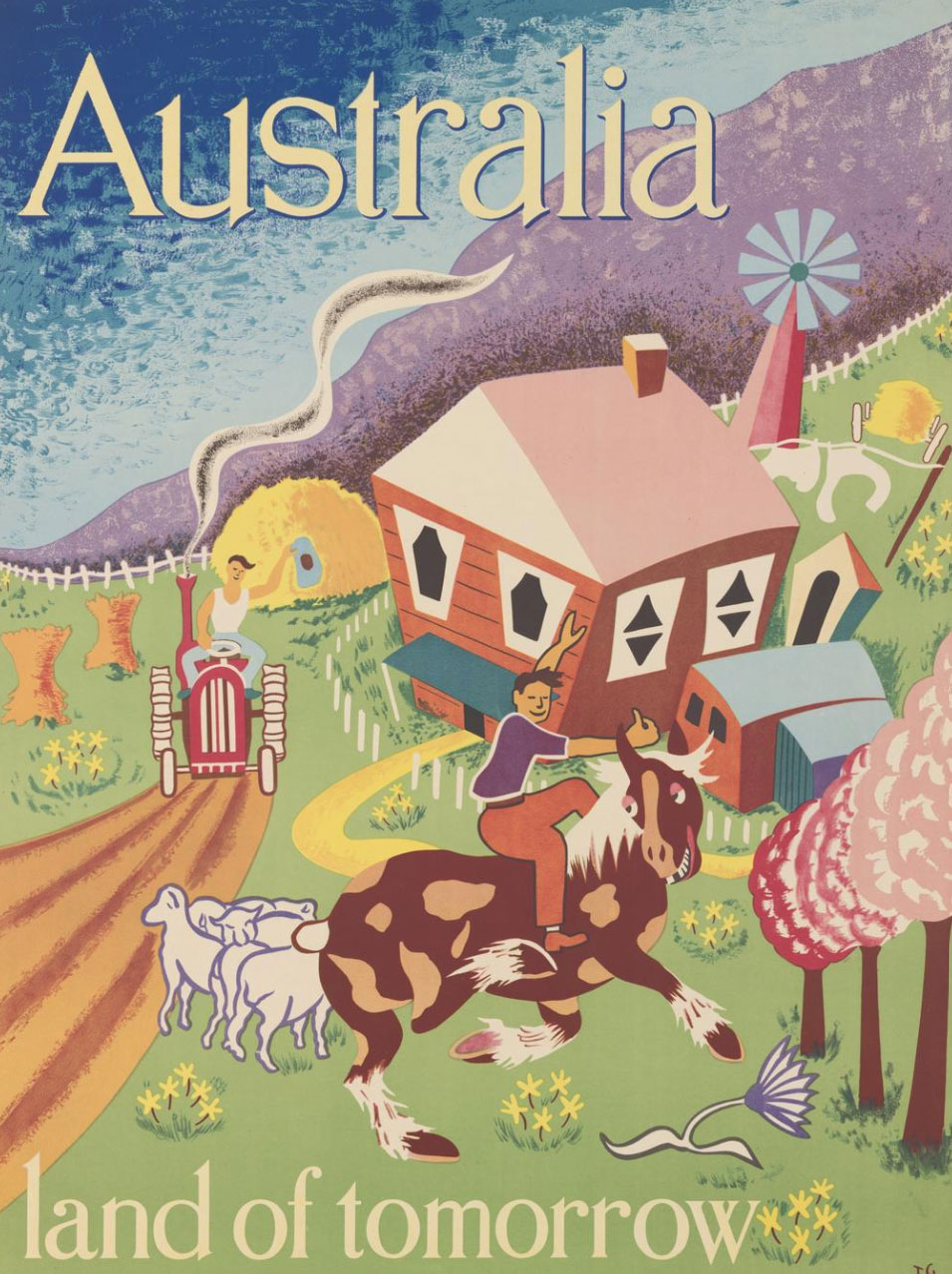
Although the doctrine of terra nullius was not invoked in the early settlement of Australia (it was first used much later to limit the territorial claims of the squatters), the European conception of inhabitation was intimately grounded in the practice of agriculture: the Indigenous people manifestly did not plough the earth and raise cereal crops, and therefore have permanent towns and villages.
This must have coloured the general perception of them, even though government clearly asserted from the outset that their rights were to be respected and that British law was to apply equally to both natives and settlers.
The National Library of Australia’s exhibition Hopes and Fears: Australian Migration Stories, at any rate, is about the successive waves of migrants who came to Australia over what is now approaching a quarter of a millennium – whether as farmers, which is indeed a recurring theme, or as miners, construction or white-collar workers – the myriad and increasingly diverse people who today constitute the vast majority of the Australian population.
Drawing on the library’s vast holdings, the displays include fascinating material that charts the changing attitudes to migration and especially to the groups of people who were, at different times, deemed most suitable to contribute to the nation’s growing population.
The first settlers to arrive here, in the year before the French Revolution, were not sent out to found a nation, to occupy the continent or even to establish a city. Sydney was intended as a penal colony, and even two decades later, when Lachlan Macquarie was governor (1810-21), he was criticised for spending too much money on ambitious building projects, more suited to a substantial urban centre and indeed a network of towns than to a prison.
But Macquarie was not the only one to conceive grander plans; by the 1820s Sydney already had the Royal Botanic Garden (1816), the first incarnation of the State Library (1826) and the Australian Museum (1828), together the first educational and scientific institutions in Australia. The University of Sydney was founded – in College Street and what is today Sydney Grammar School – in 1850.
Soon there was agitation among the free settlers to stop the transportation of convicts; but after its cessation in NSW in 1840, the necessity of attracting more suitable free settlers became apparent. A few years later, the gold rush in 1851 – just after Victoria had achieved separation from NSW – enormously increased Australia’s population in a short time: from about 430,000 in 1851, the population grew to 1.7 million in two decades, and by the 1880s was more than 2.25 million.
By 1855, 17,000 Chinese had come to Australia, to look for gold or to work as labourers or set up shops and businesses.
One of the most interesting documents in the exhibition is a map titled The Flow of Population (1920), which tells us that the “average yearly migration from Europe during the five years ending June 1912” was 910,570, and asking “where did they go?”. The answer, graphically illustrated in red arrows of different thickness, turns out to be: 63 per cent to the US; 17 per cent to Canada, 12 per cent to South America and only 5 per cent to Australia.
Several leaflets in the exhibition allude to farming: one of these encourages settlers in the north, Tropical Agriculture in Australia (1921); another is titled Australia’s Irrigation Enterprises (1924); and a third promotes employment opportunities in Australia’s timber resources (1924). But two of the most interesting are a decade or so older: How to Go on the Land in NSW (1909) and From Labourer to Landlord (1910), based on the experience of one British migrant, with a cover significantly showing a young man driving a plough through some freshly turned soil, while an inset photograph hints at the comfortable homestead the migrant can look forward to earning by his hard work.
Several posters advertise sea passages to Australia, including a P&O poster from 1928 offering fortnightly sailings via Egypt and Ceylon; the Aberdeen and Commonwealth Line offers one-class only passages via the Suez Canal (1932), illustrated already with an image of the newly completed Sydney Harbour Bridge; and the Commonwealth Government Line, established by prime minister Billy Hughes after the Great War, offers the “fastest passenger cargo service” on a rather austere and no-frills poster (1918-23).
Finally, after World War II, a poster advertises the £10 assisted passage scheme established by the Australian government in 1945, which brought a new influx of the so-called ten-pound Poms (1960).
But the government was no longer solely focused on British migration; during the war it had decided to increase the population of the nation by systematically encouraging immigration from other parts of the European world. More than 3000 migrants worked from 1947 to 1952 building hydro-electric power stations in Tasmania; but, most important of all, more than 60,000, especially from southern and eastern Europe, came to Australia to work on the Snowy River Hydroelectric project from 1949.
This project is rightly seen as a crucial stage in building a harmonious multicultural population, and indeed the whole exhibition shows how a British colony was ultimately able to overcome prejudices and open itself to a broader and more tolerant conception of what it could mean to be Australian – yet reminding us how lucky we are to have been settled by the nation with the most progressive and adaptable model of liberal democracy in the world.
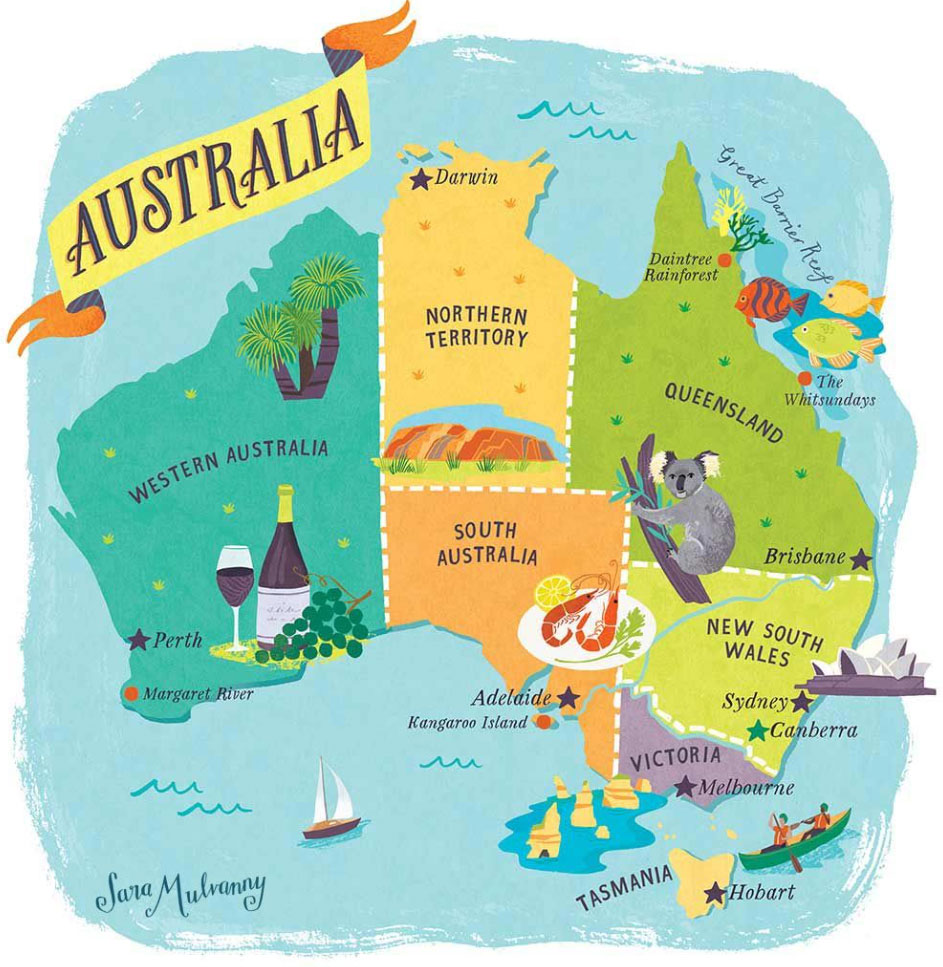
If you are interested in applying for a general skilled migration visa to Australia, it is important to have a good understanding of the skilled visa options and how the migration points test works, so that you can maximise your chances of being eligible to apply for a skilled visa.
A general skilled migration visa is an option available to skilled workers who are seeking to qualify for a skilled visa independently, or under a state or family sponsorship. It is an alternative to an employer sponsored visa.
One of the key criteria to qualify for a general skilled migration visa is the points test (a criterion that does not apply to employer sponsored visas). This is often the most challenging aspect for prospective skilled visa applicants to overcome when seeking an invitation to apply for the relevant skilled visa.
If you are considering applying for a general skilled migration program visa, an important concept to understand is the Expression Of Interest (EOI).
If you are considering applying for a general skilled migration visa, it is important to be aware that for certain visas in this visa class, you will first be required to lodge an EOI with the Department of Home Affairs (the Department) through SkillSelect. The EOI is not a visa application, but rather, it is the process by which you can express your interest in applying for the relevant skilled visa (It’s important to note, that there is NO fee to submit an EOI).
This requirement applies to the following skilled visa subclasses:
Let’s take a brief look at each of these visas below:
The ‘subclass 189’ is a federal sponsored visa that grants automatic permanent residence in Australia. It is subject to nil visa conditions or obligations. For this reason, it is often considered to be the most flexible of the skilled visa options available.
A subclass 189 points-based visa allows you to live and work in any state or territory permanently.
The ‘subclass 190’ is a state/ territory sponsored permanent residence visa. It is another points-based visa for which invitations are issued throughout each month by individual states and territories. One of the benefits of applying for state nomination is that you will be granted an additional 5 points.
An important aspect to consider, which does not apply to the subclass 189 visa is that there is an added step in the application process. In this case, you must also apply for nomination approval to a state or territory government. Only upon receipt of an invitation from the relevant state or territory to which you apply can you then apply to the Department for the visa itself.
Your obligations as a subclass 190 visa holder are that you must commit to your nominating jurisdiction’s obligations and commit to residing in your nominating State or Territory for two years from visa grant.
The ‘subclass 491’ is also a points-based state/ territory (or family) sponsored visa. It is a regional visa with a term of five years. The Department issues invitations for family sponsored EOI applications only (in invitation rounds). Invitations for state sponsorship are issued by individual states and territories throughout each month. This will grant you an additional 15 points for the nomination.
Being a provisional visa, this means it provides a pathway to permanent residence in Australia with the Subclass 191 Permanent Residence (Skilled Regional) visa, subject to meeting specified requirements.
Be mindful that as a subclass 491 visa holder, you must abide by visa condition 8579, which requires you to live, work and study in a designated regional area of Australia. For migration purposes, most locations of Australia outside of major cities (Sydney, Melbourne, Brisbane, Perth, etc.) are classed as regional areas.
If your EOI is successful, you will receive an invitation to apply for the visa, as specified in the invitation letter. This then enables you to proceed with lodgement of your visa application (provided you meet all other visa lodgement and visa grant requirements).
Please note, the below State and Territory program updates is a general overview only. It does not take into account any of your personal circumstances. You must check the State/Territory information carefully to ensure you can meet all the requirements for nomination.
Australia is currently facing a shortage of skilled migrants to fill workforce demands. In response, states and territories have been easing the conditions of their visa programs to help attract skilled workers from overseas.
Below is the monthly update for some of the State and Territory opportunities available.
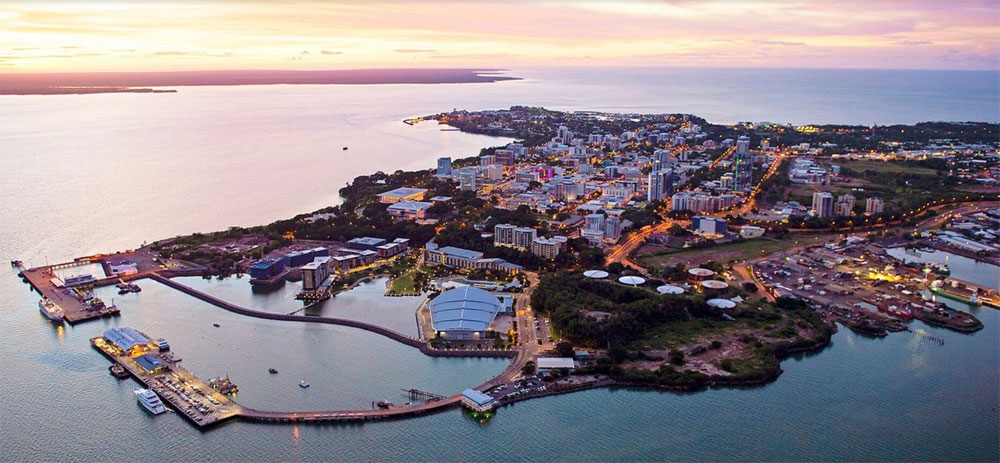
Program Status Update
UPDATE: Northern Territory General Skilled Migration (GSM) nomination applications for 2024-25
Northern Territory has now received sufficient nomination applications to fill the total allocations for the 2024-25 program year. To manage the large number of applications received against the limited allocation of nominations given to the Northern Territory we have suspended our online portal for new applications. All applications received before the suspension will continue to be assessed, and those who meet the eligibility criteria will be issued nominations.
The program will be reopened for new applications once nomination allocations are received for the 2025-26 program year (The program year generally runs from Start of July 2025 – End of June 2026).
During the suspension, applications will continue to be accepted by exception for onshore applicants who have certain visa deadlines before 1 July 2025. For more information on this, please view the update on NT GSM nomination applications for 2024-25 page.
Once the above mentioned temporary suspension is lifted, you may be able to proceed with the NT’s usual skilled migration program. Program details below:
People residing offshore are eligible to be considered for Northern Territory (NT) nomination. Invitations to apply for Northern Territory nomination will be via the ranking system.
The ‘Northern Territory Offshore Migration Occupation List’ identifies the occupations in current demand in the Northern Territory. This List is important if you want to apply for Northern Territory nomination for either a:
The ‘Northern Territory Offshore Migration Occupation List’ is only applicable for those applying for NT nomination from outside Australia, under the Priority Occupation stream.
Please note: The Northern Territory government has advised that offshore applicants will generally only be offered a Northern Territory nomination for a subclass 491 visa. Subclass 190 nominations will only be offered in exceptional circumstances, such as cases where the applicant has strong connections to the NT.
The NT advises eligible applicants to apply as soon as they meet the eligibility criteria. To receive a nomination from the NT Government, you must:
Before submitting an EOI for The Northern Territory, applicants should check that they meet all eligibility requirements.
For a further explanation, see the Frequently Asked Questions page on the Northern Territory Government website.
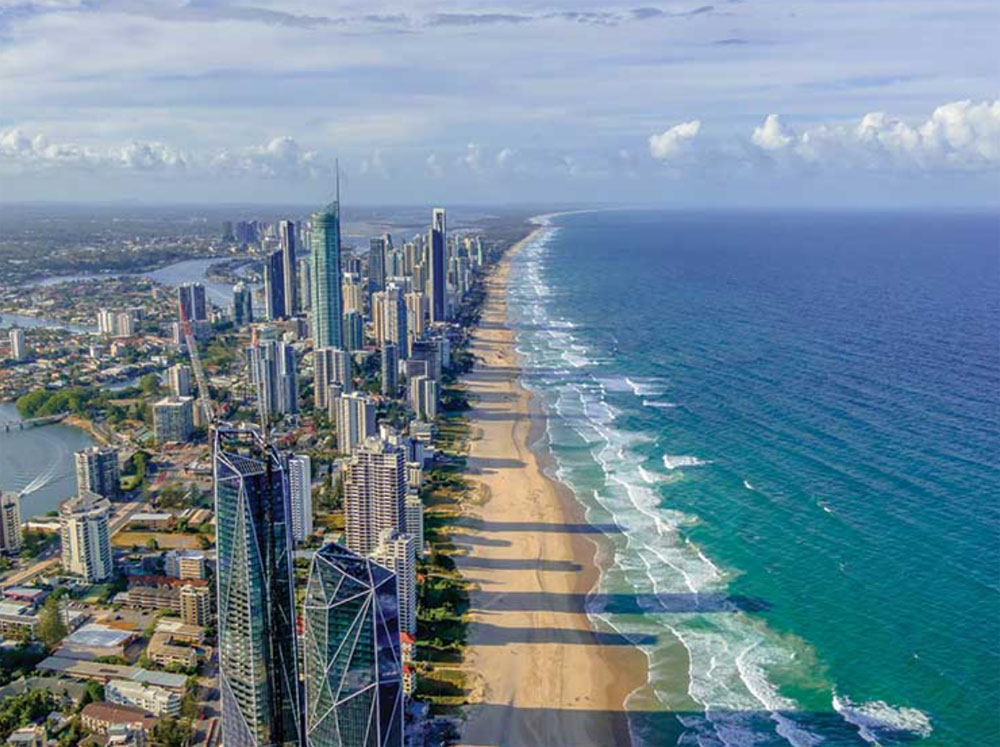
Program Status Update
To manage Queensland’s COVID recovery response, applicants currently residing offshore are now able to apply.
Depending on your occupation and situation, there are two state nomination options available for skilled migrants through Queensland.
For Queensland state nomination, prospective applicants must meet the Department of Home Affairs requirements, state-specific occupation requirements and have skills in an occupation that is available on the Queensland Skilled Occupation List.
You may undertake employment once onshore in Queensland through:
Offshore applicants meeting the minimum published requirements are eligible to lodge an Expression of Interest (EOI) on SkillSelect and then a Registration of Interest (ROI) on the Migration Queensland portal.
Migration Queensland has opened the 2024-25 State Nominated Migration Program. For more information, please see here.
NOTE: To be eligible for Queensland’s 2024-25 program, your EOI must be submitted on or after 13 September 2024.
Migration Queensland criteria requires you to:
The 2024-25 Skilled Migration Program is open to both onshore and offshore applicants and provides pathways for skilled workers, graduates, and small business owners.
Before submitting a Registration of Interest (ROI) for Queensland, applicants should check that they meet all eligibility requirements.
Note: In the EOI, select ‘Queensland’ as the only state of interest in the EOI, if you wish to be considered for an invitation to apply for Queensland nomination.
For a further explanation, see the Frequently Asked Questions page on the Queensland Government website.
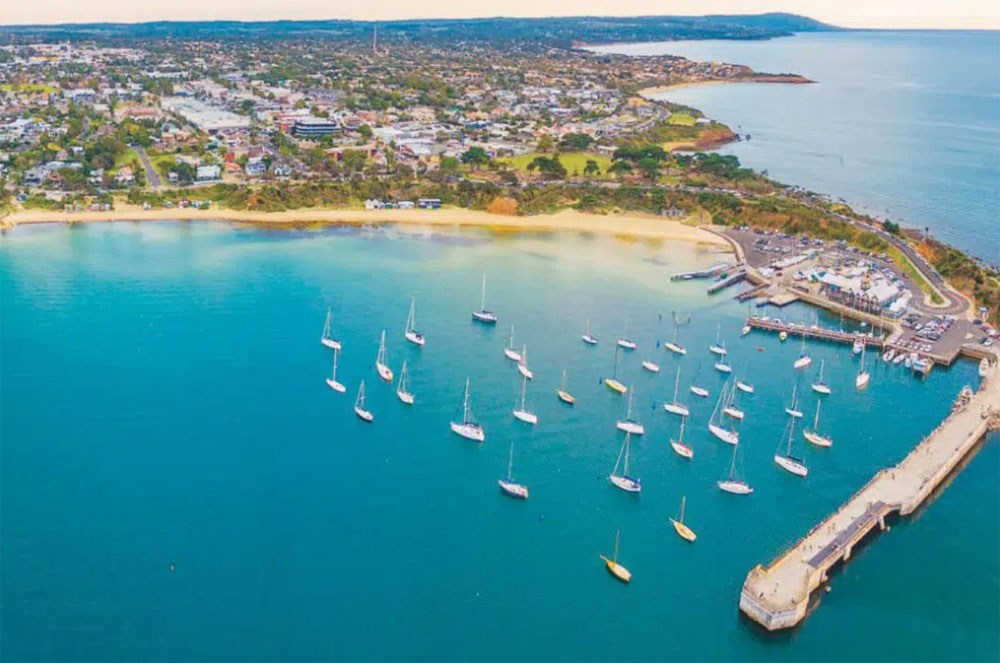
Program Status Update
Open to offshore applicants, the program provides skilled migrants with a pathway to permanent residency in Victoria. The skills that successful applicants bring to Victoria benefits employers and the broader Victorian economy.
The program provides two visa pathways:
As with previous years, applicants will first need to submit a Registration of Interest (ROI) and then be selected on competitive merit to apply for visa nomination.
*Please note: Invitation rounds occur frequently throughout the financial year with no set date.
To be invited to apply for Victorian skilled visa nomination, you must firstly make or update an Expression of Interest (EOI) via the Australian Government’s SkillSelect and then submit a Registration of Interest (ROI).
NOTE: If you previously submitted a ROI and wish to be considered for invitation in the 2024-25 program, you must submit a new ROI.
Both onshore and offshore applicants are eligible to submit a Registration of Interest (ROI) for both the subclass 190 and subclass 491 visas.
Your ROI will remain in the system for selection until it is withdrawn, selected or the program year ends.
Before submitting an ROI for Victoria, applicants should check that they meet all eligibility requirements.
For a further explanation, see the Frequently Asked Questions page on the Victoria Government website.
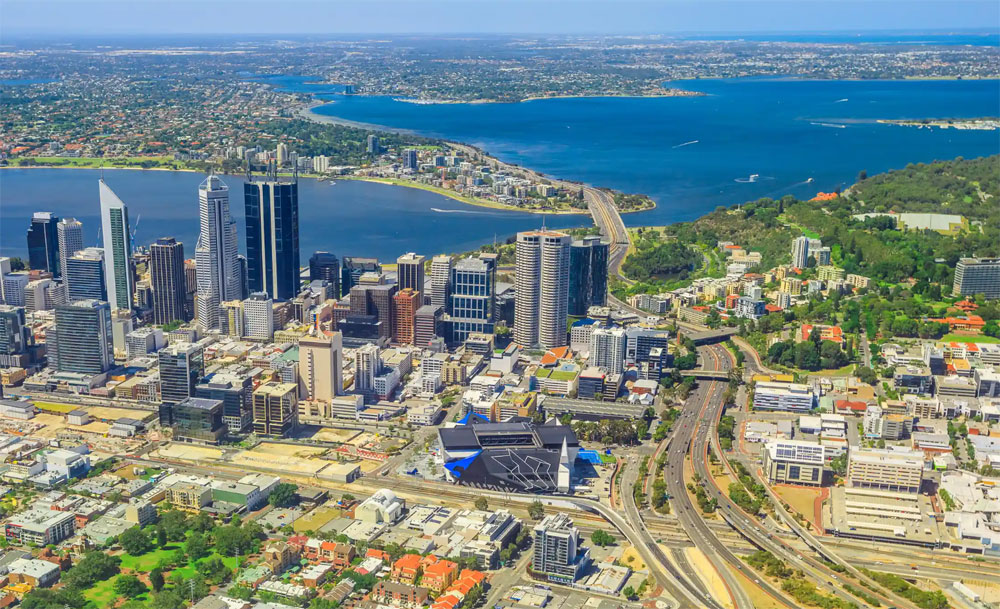
Program Status Update
People residing offshore are eligible to be considered for Western Australia (WA) State nomination. Invitations to apply for WA State nomination will be via the ranking system.
The Western Australian Skilled Migration Occupation List identifies the occupations in current demand in Western Australia. This List is important if you want to apply for Western Australia nomination for either a:
Please note that to be eligible for an invitation in the WA State Nominated Migration Program, you must meet both:
Before starting your application, you will need to check whether your occupation is available on either the WA Skilled migration occupation list (WASMOL) Schedule 1 or 2, or the Graduate occupation list. You can search for your occupation here. (The occupation list search bar is located under the heading ‘Eligible Occupations’.)
Features of the WA 2024-25 State Nominated Migration Program:
Before submitting an EOI for Western Australia, applicants should check that they meet all eligibility requirements.
For a further explanation, see the Frequently Asked Questions page on the Western Australia Government website.
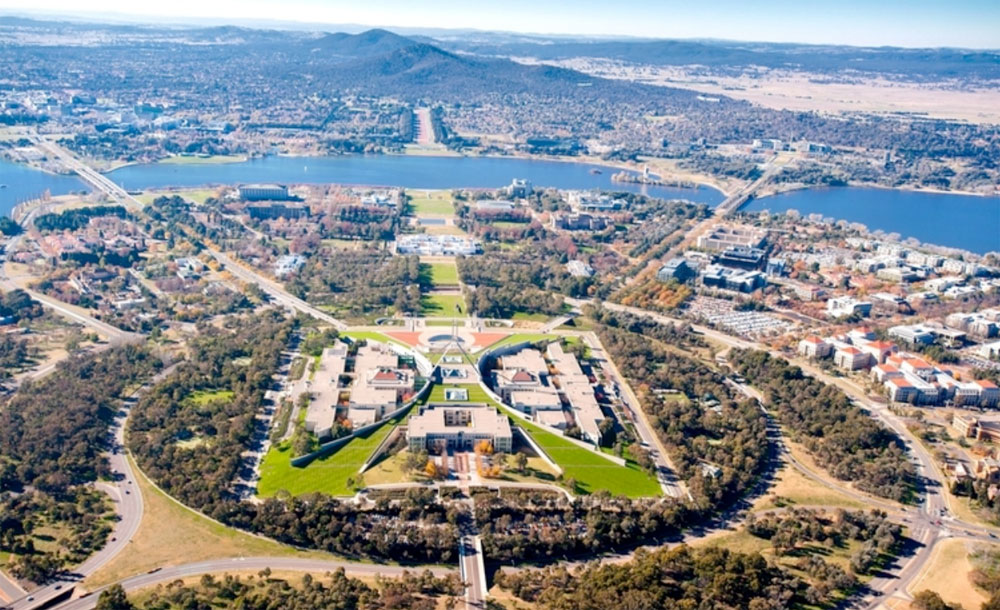
Program Status Update
The ACT Critical Skills List identifies the occupations in current demand in the ACT. This List is important if you want to apply for ACT nomination for either a:
The ACT Government will update this list every four months to make sure that the ACT Skilled Migration Program adapts and responds to the evolving critical skills needs of the ACT economy.
The Canberra Matrix is weighted to ensure that applicants who will make a positive economic contribution to the Territory and/or have demonstrated a genuine commitment to the ACT are more likely to be ranked and invited to apply for ACT nomination.
*ACT nomination does not guarantee a migration outcome. You must still meet the Department of Home Affairs criteria.
Every month, a certain number of nomination invitations are available (prorated on the annual allocation) to those working in the highest ranked Matrix in each occupation.
You can view the ACT’s most in-demand skills for skilled migration by consulting the ACT Critical Skills List.
Before submitting an EOI for The Australian Capital Territory, applicants should check that they meet all eligibility requirements.
Once you’ve submitted a valid Department of Home Affairs Skill Select EOI, follow the ACT Government Process to apply for ACT nomination.
For a further explanation, see the Resources page on the ACT Government website.
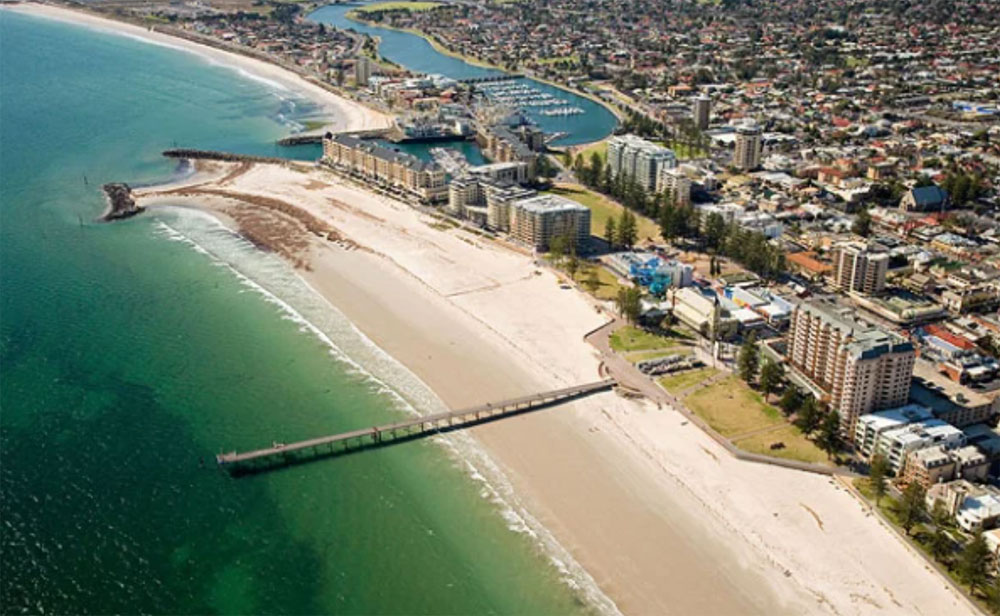
Program Status Update
To manage South Australia’s COVID recovery response, applicants currently residing offshore are able to apply.
Depending on your occupation and situation, there are two state nomination options available for skilled migrants through South Australia.
For South Australian state nomination, prospective applicants must meet the Department of Home Affairs requirements, state-specific occupation requirements and have skills in an occupation that is available on the South Australian Skilled Occupation List. Offshore applicants meeting the minimum published requirements can now lodge an Expression of Interest (EOI).
There is an enormous range of occupations on South Australia’s Skilled Migration Occupation List in a range of industries – search for your occupation here.
South Australia will select offshore applicants to apply for state nomination from those who have submitted an Expression of Interest (EOI) through SkillSelect. Offshore applicants will not need to lodge a Registration of Interest (ROI) for this year’s program. South Australia will be nominating offshore applicants from over 250 occupations on South Australia’s Skilled Migration Occupation List.
If you are currently residing offshore and seeking to move to South Australia, the first step is to create an Expression of Interest (EOI) in SkillSelect ensuring you select South Australia as your first preferred State or Territory.
The South Australian Government can then review your EOI for consideration under the Skilled Nominated (Permanent) visa (subclass 190) or Skilled Work Regional (Provisional) visa (Subclass 491).
For most occupations, applicants must have a minimum of three years of skilled employment in their nominated or related occupation within the last 5 years to secure an invitation to apply for SA nomination.
South Australia will be assessing candidates on merit by the following factors:
For occupations in the construction trades (as listed here) applicants must have a minimum of one year of skilled employment in their nominated or related occupation within the last 3 years.
Applicants in the construction trades will be assessed on merit by the following factors:
Before submitting an EOI for South Australia, applicants should check that they meet all eligibility requirements.
For a further explanation, see the Frequently Asked Questions page on the South Australia Government website.
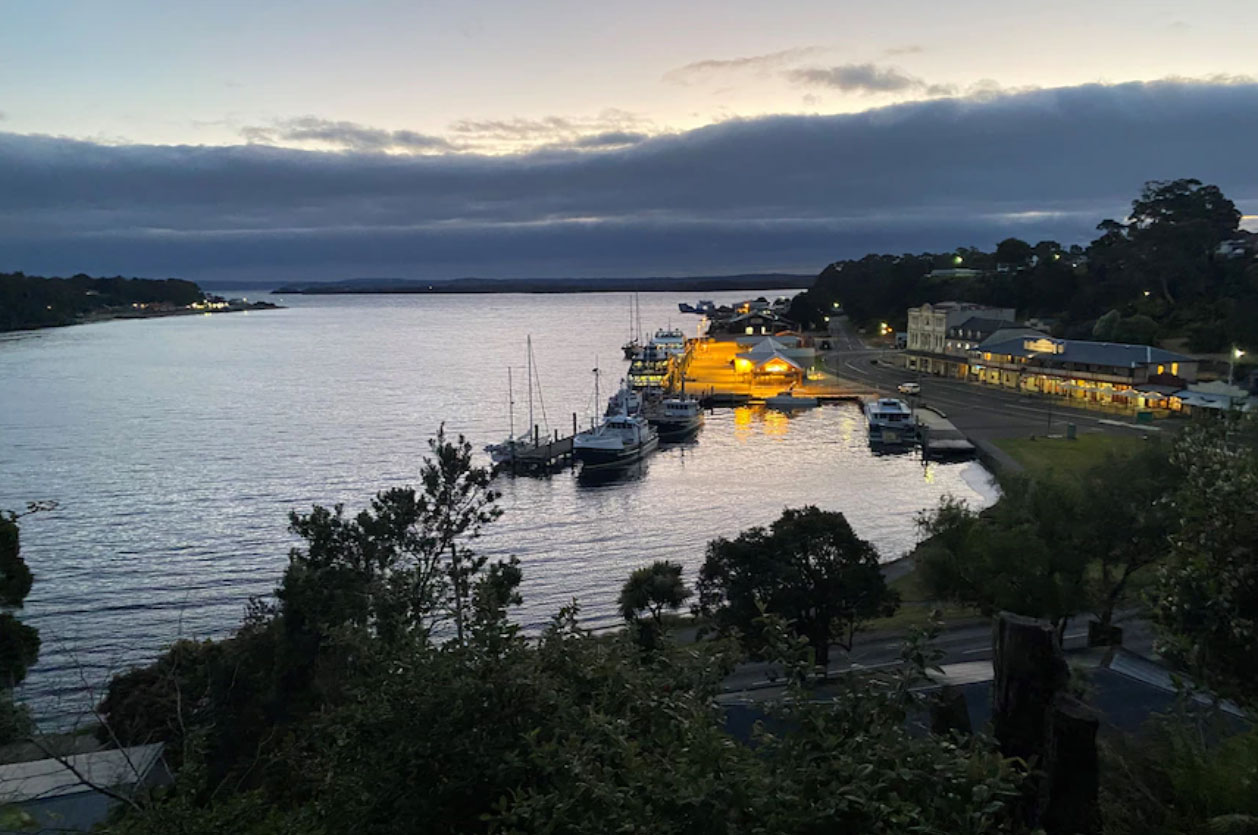
Program Status Update
Working in Tasmania
The two state nomination options available for skilled migrants through Tasmania are:
The Tasmanian State Nomination Skilled Migration Program supports Tasmanian businesses and increases the state’s working age population. It does this by attracting and retaining migrants with skills genuinely in need by employers, or with the capacity to settle in Tasmania through skilled employment in the long-term, and business activities that will increase employment opportunities.
Tasmania’s skilled migration program is for people wanting to move to the state who have skills that Tasmania need. Skilled migrants are attracted to Tasmania because of the state’s enviable lifestyle, career opportunities, affordable housing, reputable schools and a globally recognised university.
The Migration Tasmania Application Gateway is now available for registrations of interest (ROI) and applications for skilled visa nomination from Tasmania.
Anyone seeking Tasmanian nomination for a Subclass 190 Skilled Nominated Visa or Subclass 491 Skilled Work Regional Visa must first register in the Migration Tasmania Application Gateway .
Before submitting an ROI for Tasmania, applicants should check that they meet all eligibility requirements for either;
For a further explanation, see the Frequently Asked Questions page on the Tasmania Government website.

Program Status Update
The New South Wales government has invited applications from offshore migrants under the following nomination streams:
The NSW State Government announced that offshore applicants skilled in certain ANZSCO unit groups are eligible for NSW nomination.
*Please note: Invitation rounds occur frequently throughout the financial year with no set date.
NSW invites and nominates SkillSelect EOIs at the ANZSCO unit group level. To be eligible for NSW nomination (for either Subclass 190 or Subclass 491), your occupation must fall within an ANZSCO unit group identified on the NSW Skills List which reflects skills in high demand across the state, and be eligible for the visa.
Before submitting an EOI for New South Wales, applicants should check that they meet all eligibility requirements for either;
For a further explanation of how the skills list works, see the Common questions about skilled visas page on the NSW Government website.
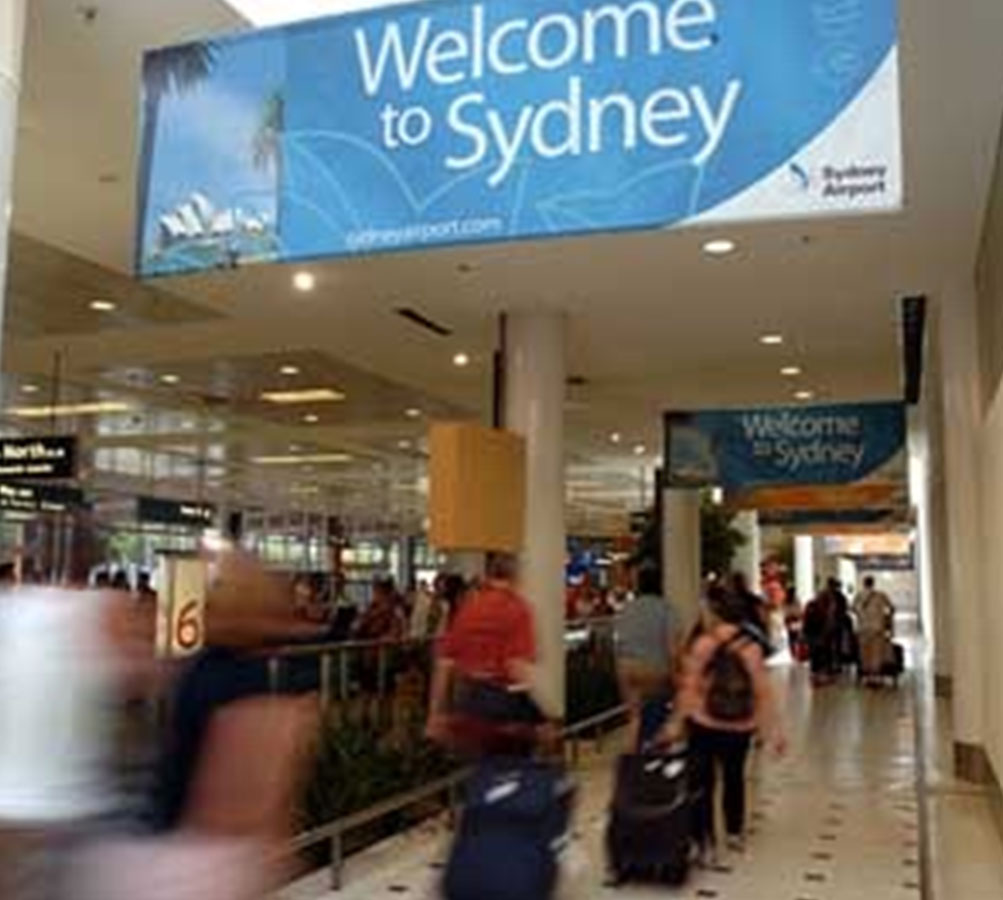
‘Statistics New Zealand’ has released net migration data for December, which showed that annual net permanent and long-term (PLT) migration inflows fell to 27,000, the lowest level since December 2022 and well below 135,600 in October 2023.
Annual arrivals continued to slow and annual departures hit record highs.
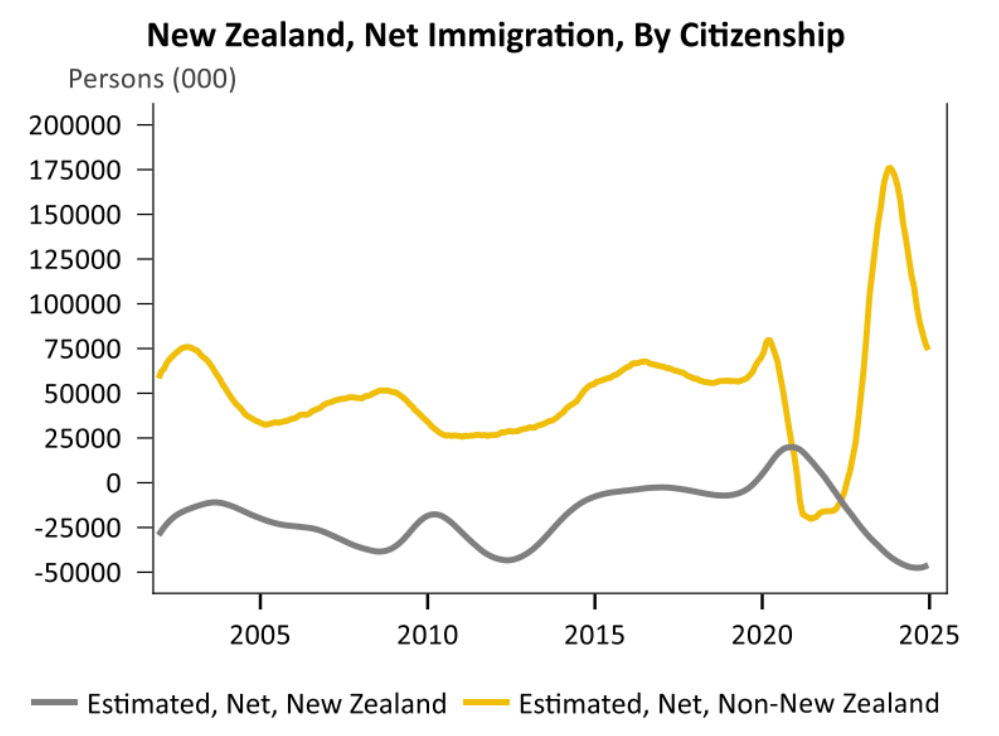
The annual net PLT inflow of non-NZ citizens moderated to 74,200. While it remained above historical averages (48,600), it was significantly lower than the net gain of 171,600 recorded over 2023.
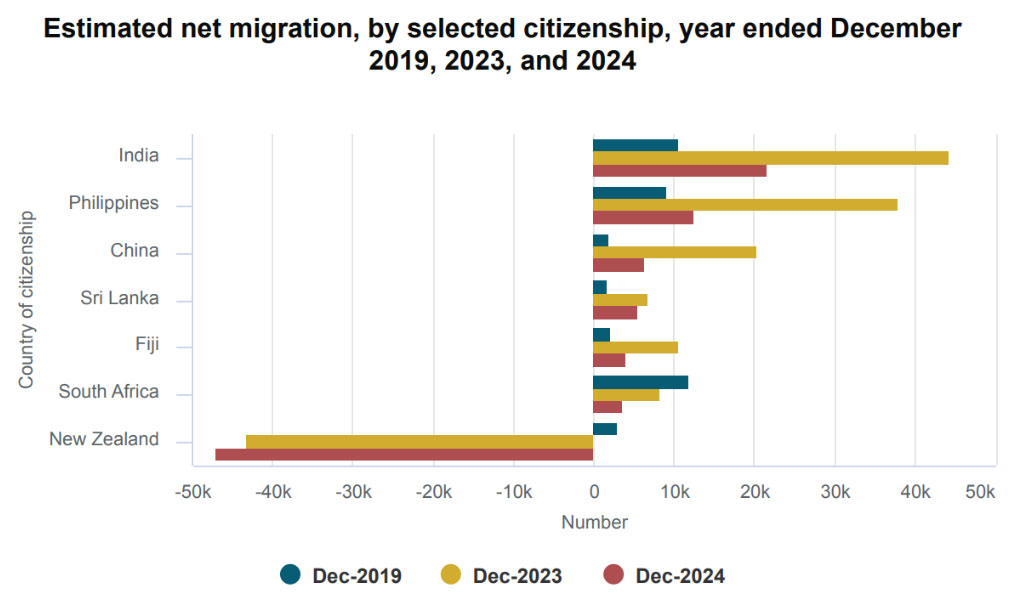
The outflow of NZ citizens strengthened to 47,100, a near-record high, as Kiwis seek greener pastures offshore.
There was a provisional annual net migration loss of 30,200 people to Australia.
Historically, there has been a net migration loss from New Zealand to Australia. This averaged around 30,000 from 2004 to 2013 and 3,000 annually from 2014 to 2019.
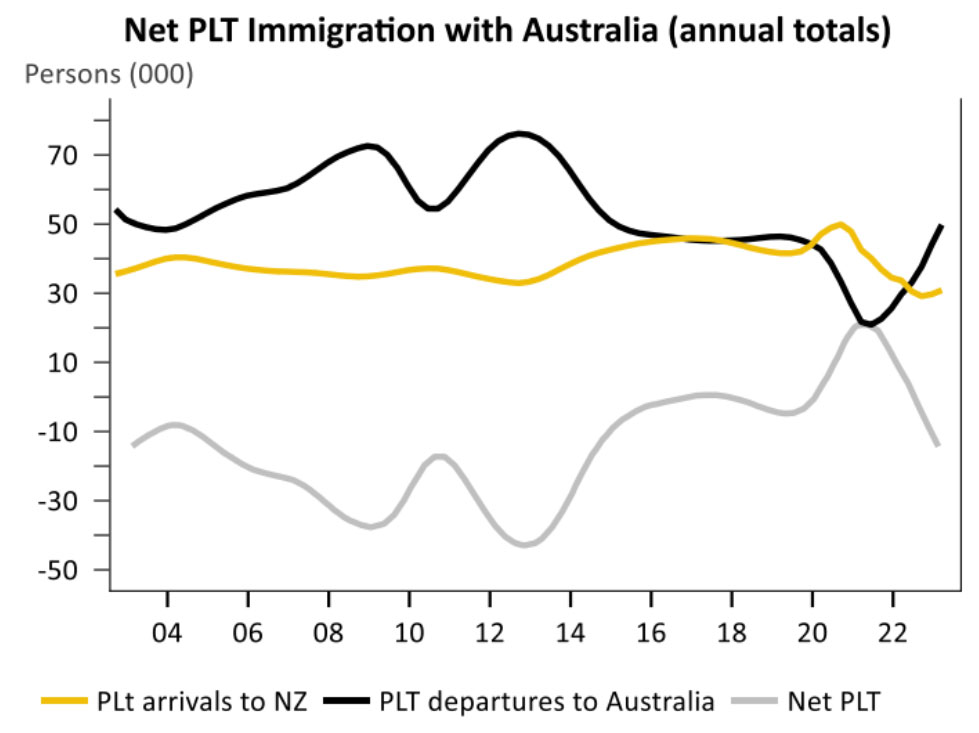
It is easy to see why. New Zealand’s unemployment rate soared to 5.1% in Q4 2024, up from 4.8% in Q3 2024.
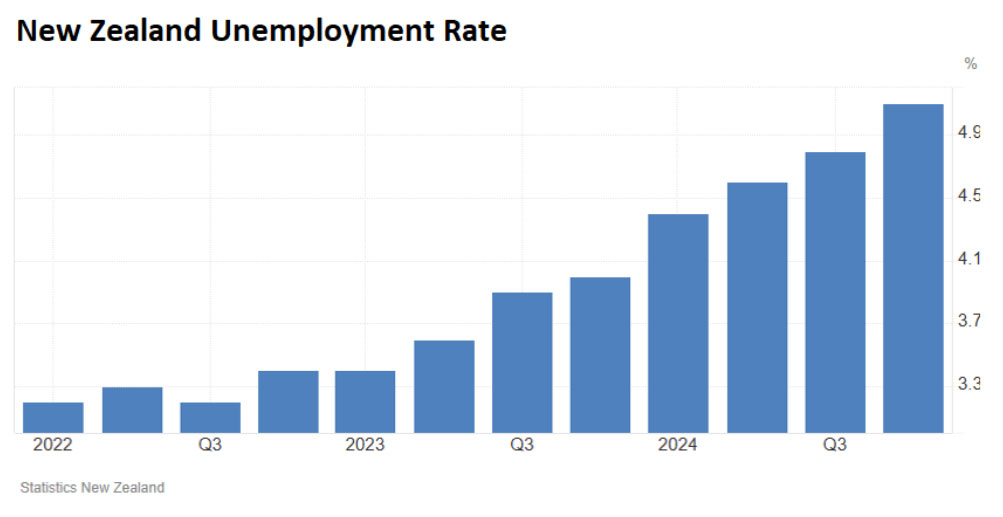
The number of jobs across New Zealand has also shrunk for three of the past four quarters.
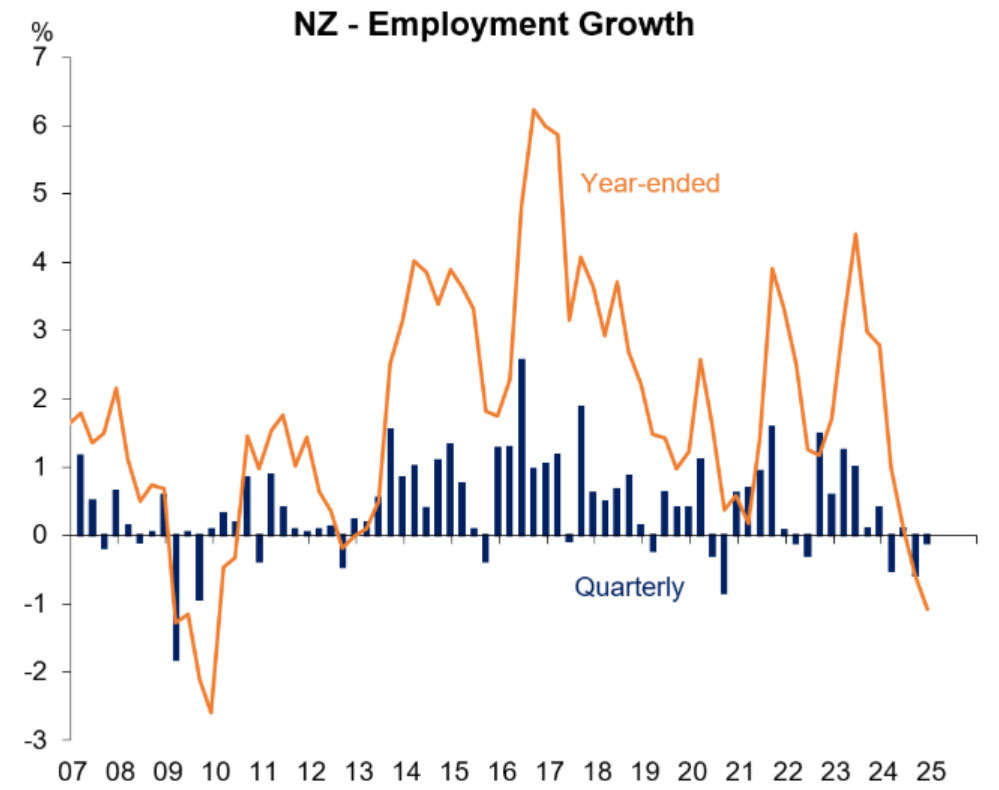
By comparison, Australia’s unemployment rate was 3.9% in Q4 2024 (4.0% in January).
The gap hasn’t been this wide in favour of Australia since Q3 2012 when there was a similarly strong outflow of Kiwis to Australia.
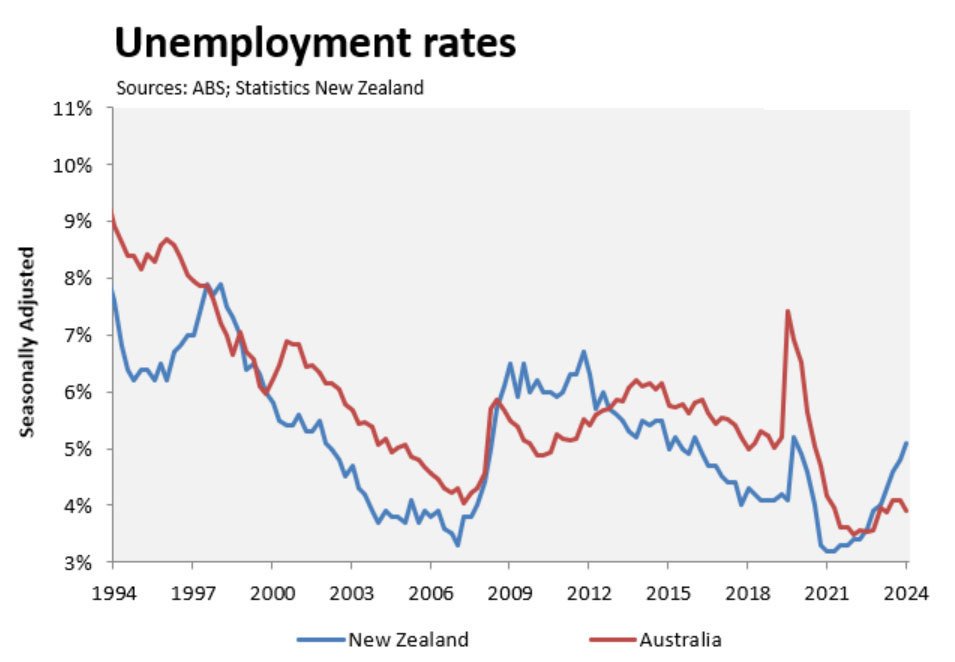
Clearly, Kiwis are seeking the greener labour market pastures of Australia.
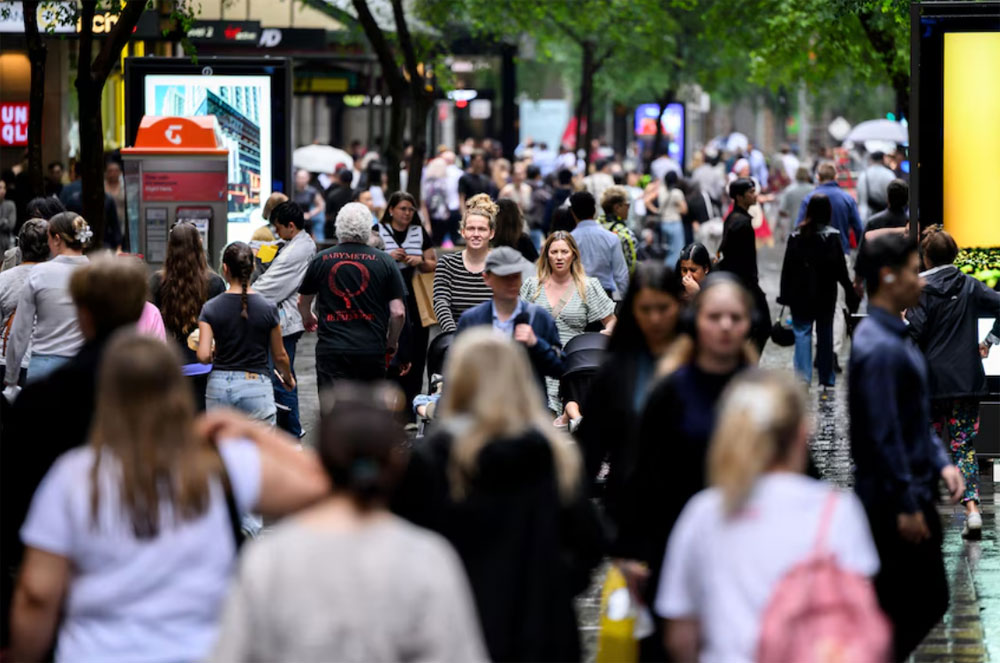
Australian households and businesses should benefit from lower interest rates and improved market conditions, in what a University of South Australia economist predicts will be a year of growth for the country.
UniSA’s Credit Union SA Chair of Economics says global economic growth is expected to improve in 2025, with G20 economies averaging growth rates of 3.35%. India and Indonesia are stand out markets and will benefit Australia as they are both major export markets.
Inflation is also expected to further recede, with central banks having reached their monetary policy targets in nearly half of the world’s advanced economies (US, UK, Canada, Japan etc) and close to 60% for emerging market economies (India, Brazil, South Africa etc).
Inflation is coming down in Australia and rate cuts are expected in the first half of the year. However, there are still lingering concerns about Commonwealth payments affecting the CPI (consumer price index) numbers, services inflation running over 4% and low unemployment.
“All of this implies that spare capacity is limited in the economy and that any increase in demand accompanied by lowering interest rates could rekindle inflation.”
Dr Stone, a former OECD and United Nations economist, says the labour market picture is more nuanced, with growth in full-time employment post-COVID-19 slightly ahead of part-time work, but this varies significantly by sector. The strongest employment increases have been in electricity, gas and water (EGW) and construction nationally.
“EGW has more than doubled its employment growth since COVID (compared to the 10-year average) but it has come mainly through part-time work – 11% growth versus 3% growth in full-time jobs,” Dr Stone says. “The construction and health sectors were the next highest at 1.6% and 1.5% growth respectively. Both experienced stronger growth in full time workers than part-time.
“Professional, scientific and technical services employment has actually grown at a slower rate in Australia since COVID with the average annual rate of 0.8% versus the average rate of 0.9% since 2014. However, manufacturing, while small, shows much stronger employment gains since COVID then in the 10-year period overall. In this sector, part-time employment has actually fallen while full-time has increased.
“We see the construction sector really bouncing back from pre-COVID averages, with full-time job growth (at 1.7%) more than twice the rate as prior to COVID (0.7%) while part-time job growth remained the same (1%). Thus, tight conditions in the construction industry job market are likely to continue into 2025.”
As inflation comes down and real wages rise, some recovery in household finances can be expected which should increase household spending. A key to growth in Australia’s economy for 2025 and beyond is business investment, Dr Stone says.
“We saw volume measures of retail spending finish the year up, especially for household goods, which means people aren’t just spending more because of price increases. As the price index (CPI) continues to fall faster than the wage index (WPI), along with the expected cut in interest rates, household budgets should recover in 2025,” she says.
Following Donald Trump’s official inauguration as the United States’ 47th president, like many countries, Australia is adapting to his return and promise of new tariffs on Canada, Mexico and China.
Dr Stone says Australians may be affected by the additional trade barriers as even though the US accounts for only 5% of Australian exports, it still ranks as Australia’s fifth-largest export market.
“We export a relatively small number of commodities to the US but it’s still an important customer for our advanced manufacturing sector. The US imports many of our high technology products such as hi-tech engines, aircraft and space parts and machine tools,” she says.
“The US is also our second largest services export market, making up more than 10% of our total services trade. Service inputs are things like software, engineering or transport services that help produce international goods such as toys, laptops and refrigerators.”
Dr Stone says overall, 2025 should be a year of growth with Australian households and business benefitting from lower interest rates and improved market conditions.
“Overseas markets are likely to remain rocky, but a weak dollar will help exports. Structural challenges in innovation and business investment will need to be addressed to ensure sustained growth,” she adds.
A Brisbane mortgage broker has opened up about how she landed her six-figure salary.

A Brisbane worker has shared how she is earning more than $300,000 a year after changing careers. The woman said she didn’t start the job until she was 35 years old and didn’t need to go to university to get into the role.
The woman was stopped in the street and revealed she was earning a great salary as a mortgage broker running her own business. She said her income was made of commissions and an ongoing trail income, which is paid over the life of a loan.
“We’ve also got trail income that we build up over time. Month to month, it’s whatever we settle each month on top of that,” she said.
The woman said she had been in the job for 10 years, having previously worked in the health and fitness industry.
She said the job could involve a “huge workload” and joked that was why she needed to go to the gym to “balance out stress and work”.
“I did a diploma in financial markets and mortgage broking. Initially, you’re dealing with probably more first-home buyers than anything else,” she said.
“As you move your way through the career, you are dealing with more investors, people wanting to upgrade.”
According to SEEK, mortgage brokers earn between $80,000 and $100,000 a year on average in Australia.
The woman said many people started out working for someone else, which often meant lower wages compared to working for yourself.
“I think a lot of people start out working for someone because you need a mentor for two years in my industry,” she said.
“Then I think they start realising they can get the referrals on their own and then make more of a cut.”
Lending industry on the rise
Lending managers, which are similar to mortgage brokers but are employed by one bank or institution, were recently named the top job on the rise by SEEK.
The job comes with an average salary of $133,903 and has reported a 163.30 per cent jump in advertisements on the platform.
“Even though prices have started to come down, there are obvious reasons for households to be speaking to lending managers more and more as they look to sort out their finance loans that have gone off from fixed rates to variable rates,” SEEK senior economist Blair Chapman said.
Other in-demand jobs included certifiers earning an average of $114,317 a year, which has seen a 73.3 per cent increase in job ads, and building supervisors on $106,804 per year, which has seen a 72.4 per cent increase.
Discover sun, surf, and electric-blue waters in Bermagui, a seaside town with alluring coastal views, local markets, lookouts, and a range of outdoor activities.
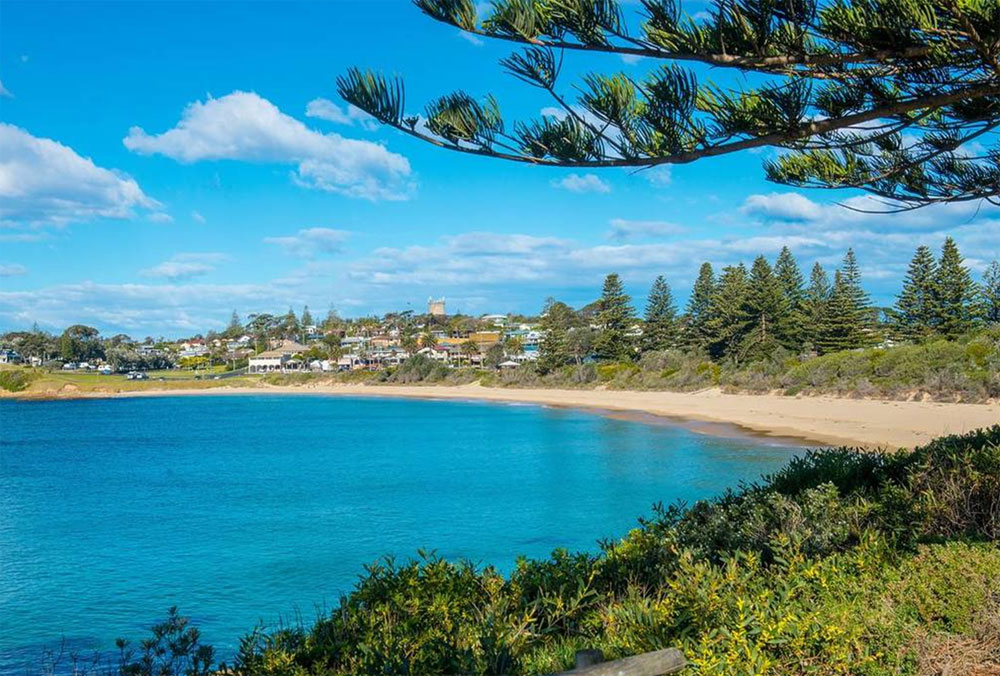
The NSW South Coast has long endeared itself to nature lovers and adventure seekers. From the clear waters and white sand beaches of Jervis Bay to the unspoiled landscapes of Eden, the region offers endless fun to all types of travellers and it’s residents.
Yet there are still plenty of hidden gems that remain overlooked. One less touristed destination is the quiet coastal town of Bermagui, which remains something of a well-kept secret, despite being tailor-made for summer. It’s a 5 hour drive from Sydney and those who make the trip will be welcomed with golden beaches, some of the state’s best rock pools, access to year-round outdoor exploration, and a pleasant laidback vibe. Make the most of the sun-soaked summer days with our guide to Bermagui.
Bermagui, NSW
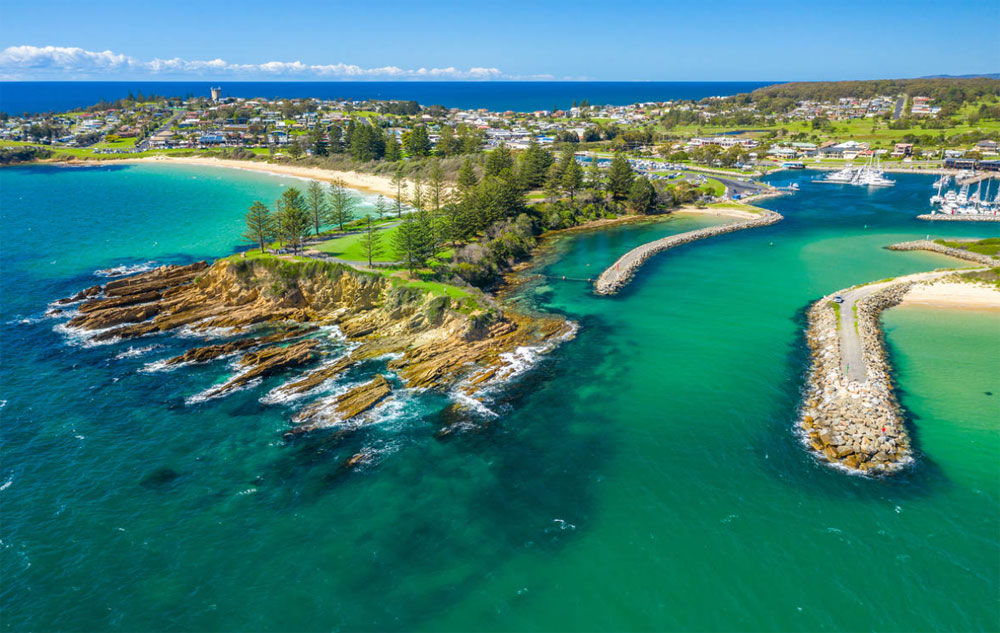
The more obscure or little-known something is, the cooler it becomes, which is certainly true for some of NSW’s best underrated coastal towns. Cushioned along a beautiful harbour and on the edge of Wallaga Lake, Bermagui is located beneath the towering Gulaga (Mt Dromedary), an ancient volcano that last erupted 60 million years ago. What it lacks in five-star luxuries, it makes up for with incredible natural beauty and plenty of adventure. Read on for some of the best things to see, eat, and do in Bermagui.
1. Visit the charming beaches
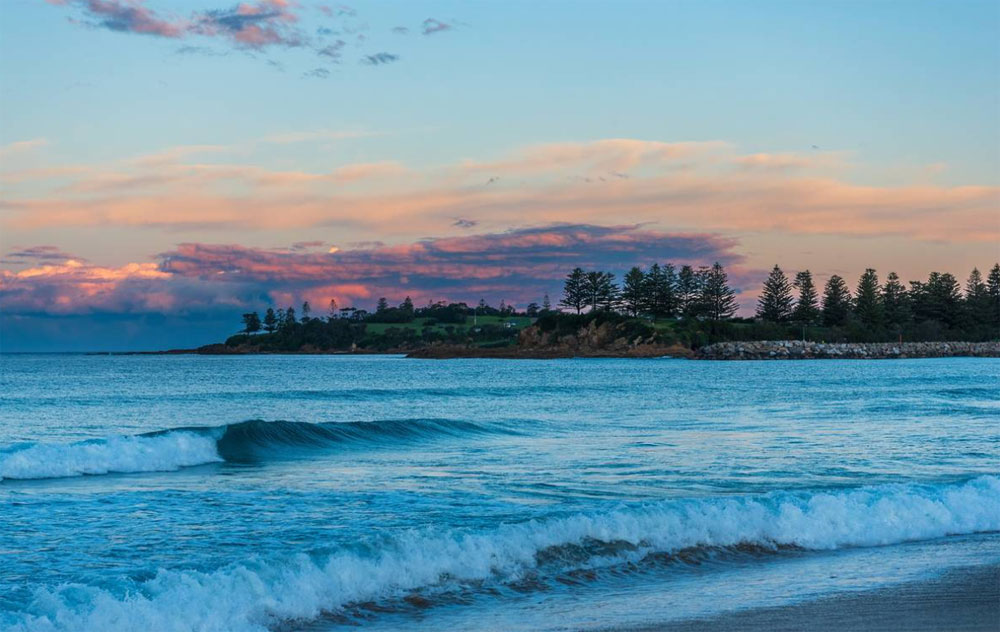
Some of the most beautiful parts of Bermagui are best accessed from the water. Horseshoe Bay Beach is a fantastic spot for families, conveniently located in the heart of Bermagui with sweeping views of Gulaga in the distance. Surfers can make their way to Bearers Beach, a photogenic spot with excellent waves and refreshing blue waters. The southern end of the beach is also dog-friendly. Haywards Beach is another frequented surfing spot with great surf and coastal walks. Looking for some extra peace and quiet? The Bermagui River will give you just that and access to fishing, boating, and kayaking.
2. Check out the incredible natural wonders
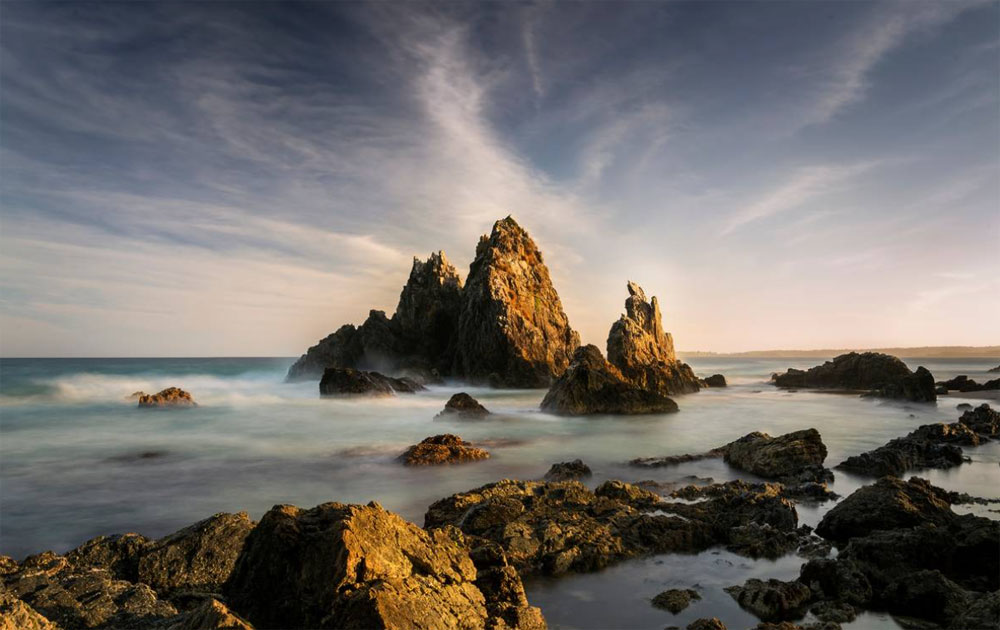
Bermagui is best known for its two stunning natural wonders — Camel Rock and Horse Head Rock. Shaped distinctly like a camel, Camel Rock is an ancient rock formation, made up of folded 470 million-year-old turbidite beds, formed by ancient underwater avalanches. It boasts a dedicated viewing platform and picnic area, offering panoramic ocean views. Equally stunning is the photographer-favourite Horse Head Rock, a 500 million-year-old rock formation that resembles a pony’s head.
3. Eat at the local cafes and restaurants
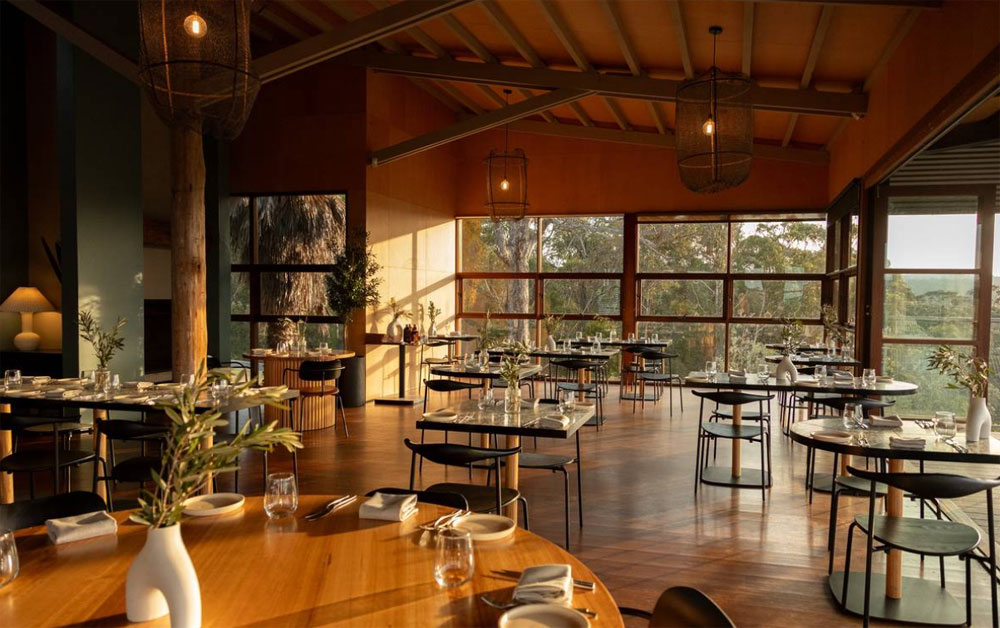
The Sapphire Coast is an under-the-radar foodie destination but well worth exploring. Bermagui’s main street is lined with bars, cafes, and restaurants with a prime view of the picturesque Horseshoe Bay. The Bermagui Beach Hotel is a popular local spot dishing out classic pub food, live music, and a relaxed atmosphere. Other popular local favourites include Bermi’s Beachside Cafe for breakfast, coffee, and good views, Eurolicious for wholesome food and a European vibe, and Sundeck in the Fishermen’s Wharf Complex for a stacked menu and views of the Bermagui harbour. For a more elegant experience, check out Mimosa Wines Restaurant serving locally sourced food and fine wine.
4. Swim in the famous Blue Pool
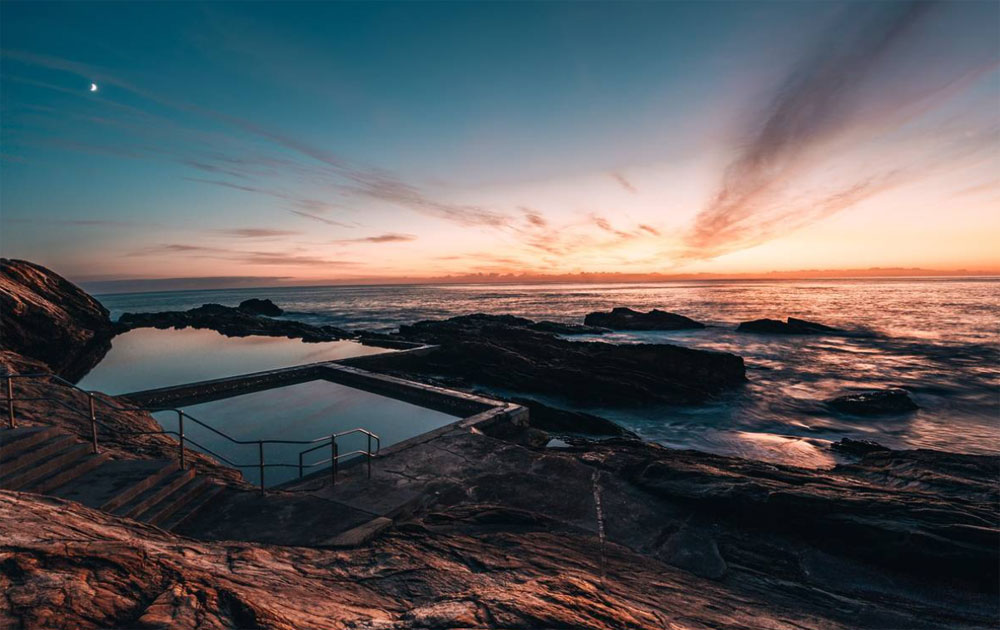
Nestled among rugged cliffs and serene coastal scenery, Bermagui’s iconic rockpool is one of the most famous natural swimming spots in NSW and a must-do in town. The gem-hued Blue Pool perfectly mirrors the surrounding ocean waters and the clear blue skies above — sometimes a striking azure, other times a soft yellow, and even a delicate pink at sunset. While not exactly a hidden gem, it’s widely regarded as one of the best ocean pools in Australia so make sure to stop by and find out what all the fuss is about.
5. Shop at the local markets and boutiques

Bermagui boasts its fair share of local trinket shops, vintage stores, boutiques, and markets if you enjoy a stroll around town and collecting kitschy souvenirs. The Bermagui Makers And Growers Market is held every Thursday at the Bermagui Country Club and offers farm fresh produce, hot meals, baked goods, accessories and more. Head to Bermagui Mudworks Pottery and Cafe for a cup of excellent coffee and enjoy the local works of art at the gallery. Local boutiques to visit include By The Sea Shore for homewares and furnishings, Bermagui Surf Shop for all your surfing needs, and Nested on Wallaga for gifts and homewares.
6. Go on a coastal walk
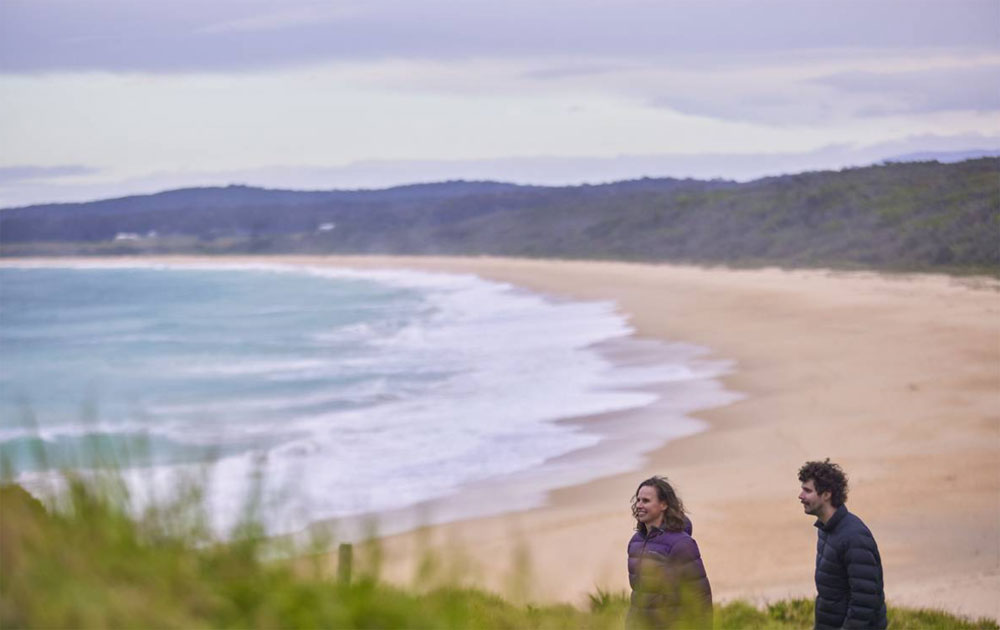
It’s hard to resist the call of outdoor adventure in a place that’s made for Instagram. Start your day early with the Bermagui Coastal Walk and enjoy 18km of wildly beautiful coastal landscapes. Stretching from Cuttagee Beach in the south to Wallaga Lake in the north, the walk meanders past magnificent coastline, lookouts, and cosy eateries if you want to stop for a while and recharge. For something short but not lacking in impact, stroll the 1.5km Camel Rock to Murunna Point Walking Track that extends from Camel Rock Surf Beach to Murunna Point. For something a bit more challenging, tackle the 2-day Mystery Bay to Bermagui Walk which offers wild vistas and secluded beaches.

A software engineer who studied computer science in Australia has emerged as one of the key figures behind the groundbreaking and controversial artificial intelligence platform, DeepSeek.
Zizheng Pan, who describes himself as a researcher for the Chinese AI company, first began a masters in computer science at the University of Adelaide in 2018 before eventually completing a PhD in the same subject at Monash University last year.
Before moving to Australia, he received a bachelors degree in software engineering from Harbin Institute of Technology, a university labelled “very high risk” by security experts for its strong ties to the People’s Liberation Army and other covert activities.
Harbin Institute of Technology excels in satellites, robotics and other technologies, while Chinese state media has described the institution as having “defence technology innovation and weapons and armaments modernisation as its core”.
Zizheng Pan’s former colleague Zhiding Yu, who supervised him while he was an intern at rival American company Nvidia in 2023, has praised the Chinese computer scientist as a “pivotal contributor to multiple significant innovations” at DeepSeek.
Engineer previously interned at DeepSeek competitor
The startup was founded in the Chinese city of Hangzhou in 2023, releasing its first AI large language model later that year. The ChatCPT rival burst onto the international scene in January, eventually becoming the most downloaded app via Apple.
“Zizheng was one of our interns at Nvidia in the summer of 2023. Later, when we considered extending him a full-time offer, he made the decisive choice to join DeepSeek with little hesitation,” Zhiding Yu wrote of his former intern this week on social media.
“At the time, the DeepSeek multimodal team comprised just three individuals. I continue to be deeply impressed by Zizheng’s foresight back then.
“He has been a pivotal contributor to multiple significant innovations at DeepSeek, including DeepSeek-VL2, DeepSeek-V3, and DeepSeek-R1. Personally, I am thrilled about his decision and the remarkable milestones he has achieved”.
Chip-maker Nvidia, where Dr Pan interned before moving to returning to China, was at the centre of a Wall Street frenzy sparked by DeepSeek’s shock rise in popularity.
While at Monash University, Dr Pan received a graduate scholarship and was a member of the Zhuang Intelligent Processing Lab (ZIP Lab), a research collaboration between Australia and China focused on machine learning systems with an emphasis on areas such as large language models.
Several other Chinese students who completed their PhDs at Monash University while also being members of ZIP Lab are now working around the world for Beijing-controlled companies, such as ByteDance and its most popular subsidiary TikTok.
Australia’s higher education accounts for the majority of student visas, with two-thirds or more going to university students
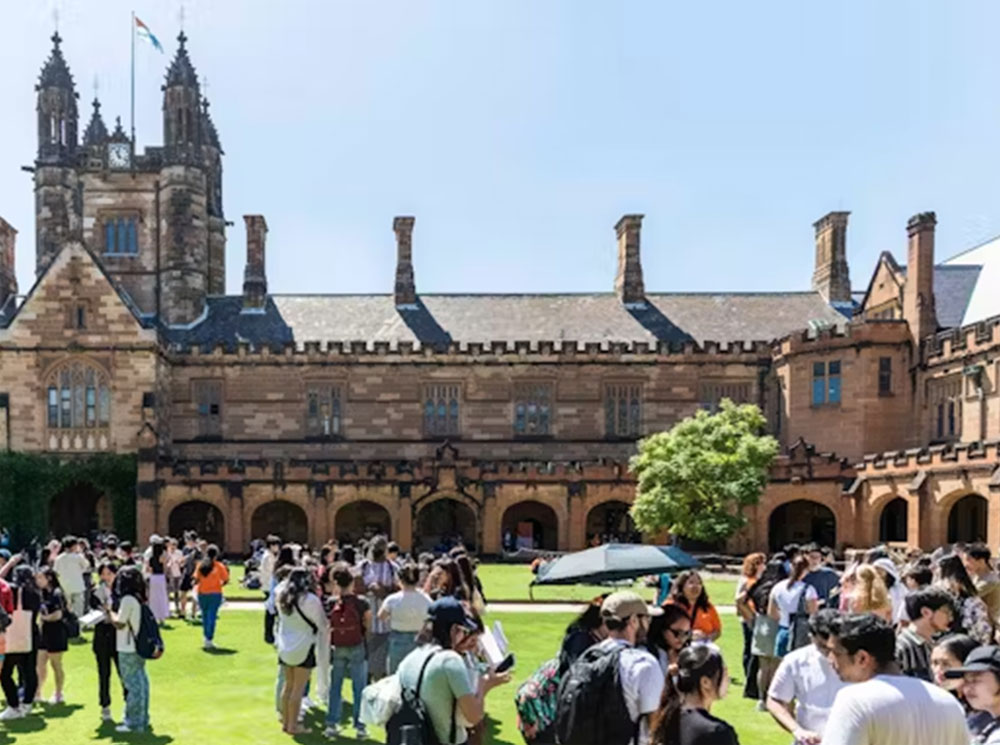
Student visa grants in Australia reached record levels late last year, showing resilience in international education despite 12 months of policy changes.
Data from the Australian Department of Home Affairs shows that visa monthly approvals for prospective university students from overseas peaked at nearly 17,000 in November 2024, the latest month for which statistics are available. Since mid-2024, monthly issuances have consistently reached or exceeded pre-pandemic records, driving an overall surge in foreign student numbers.
Higher education accounts for the majority of student visas, with two-thirds or more going to university students.
China and India a key contributor
China and India remained one of the largest sources of international students in Australia. As of 2023, there were 746,080 foreign students in the country, including:
However, questions have been raised about the motivations of some South Asian students, with concerns that the visa system may be used primarily for work rather than education.
“Australia needs to manage its international student intake to balance educational quality with the needs of the economy,” said Clare O’Neil, Minister for Home Affairs, in December 2024.


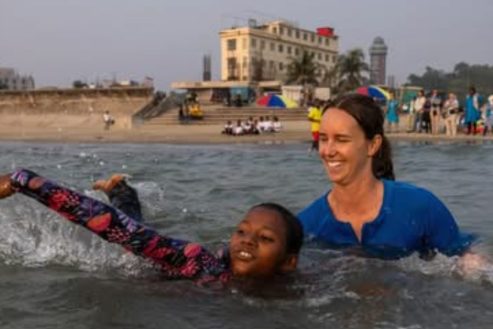






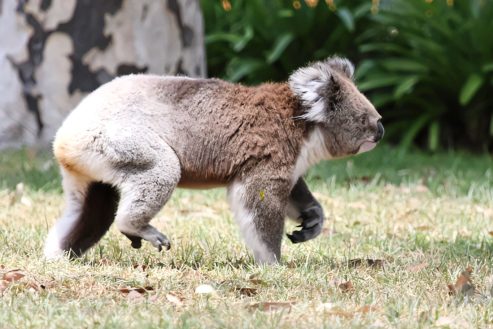
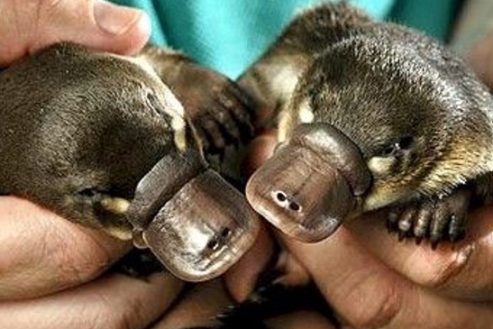

This Bulletin and its contents is for general information purposes only and should not be used as a substitute for consultation with professional advisors.
As legislation and travel requirements are constantly changing, we strongly recommend obtaining advice on your individual situation from a Registered Migration Agent. Please click here to book a consultation with one of our Registered Australian Migration Agents, located in Australia.






You can manage your membership and billing method by clicking here
Terms of Service
Privacy Policy
Copyright © 2025 Office of Immigration Australia, a private company registered in Australia. All Rights Reserved.